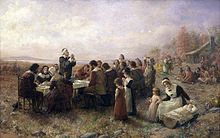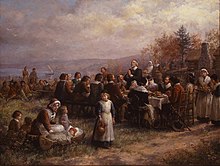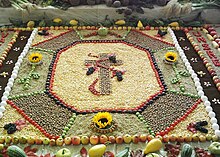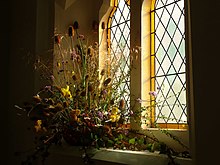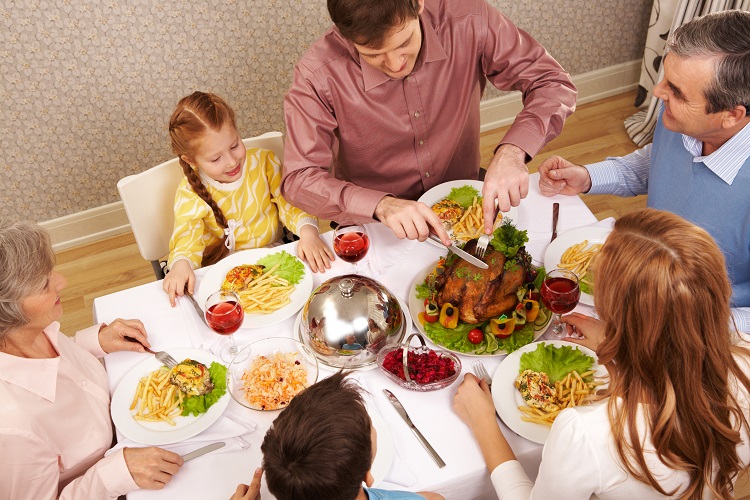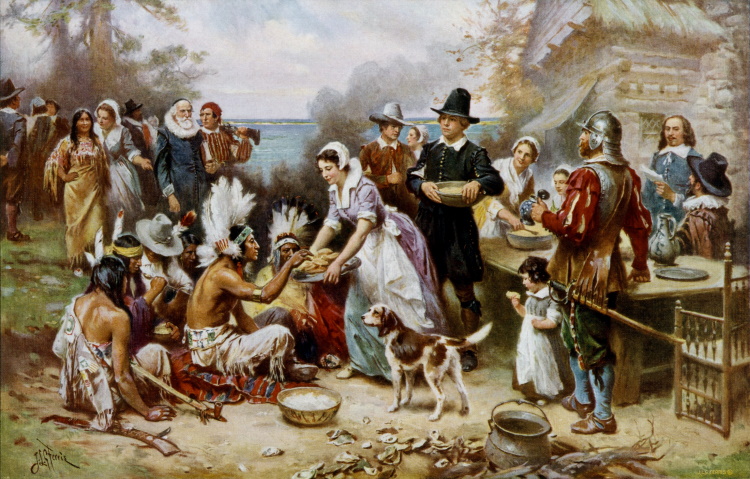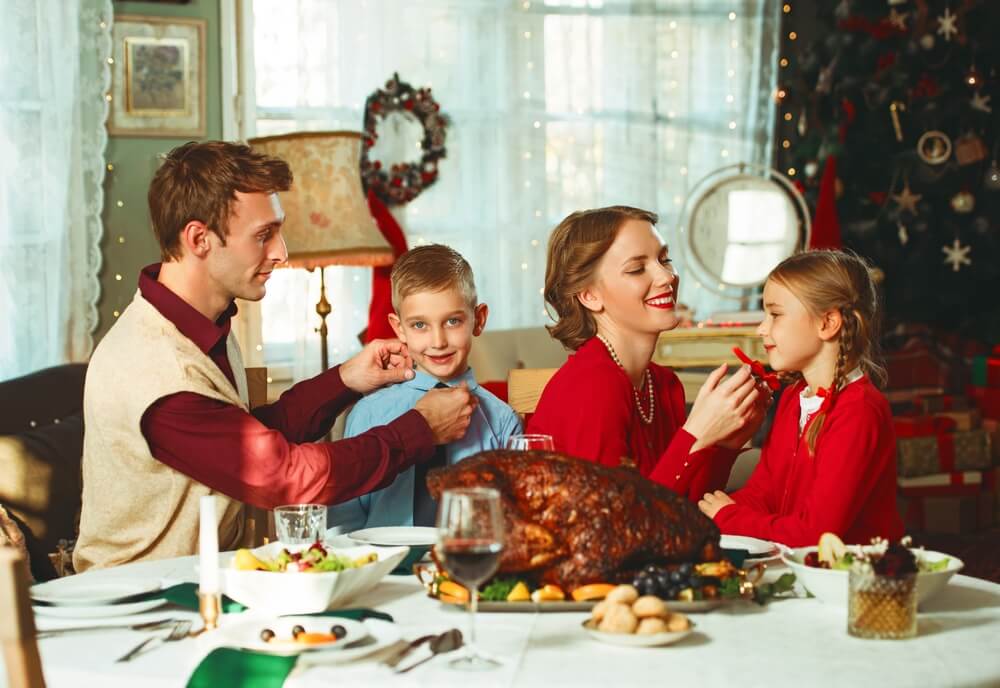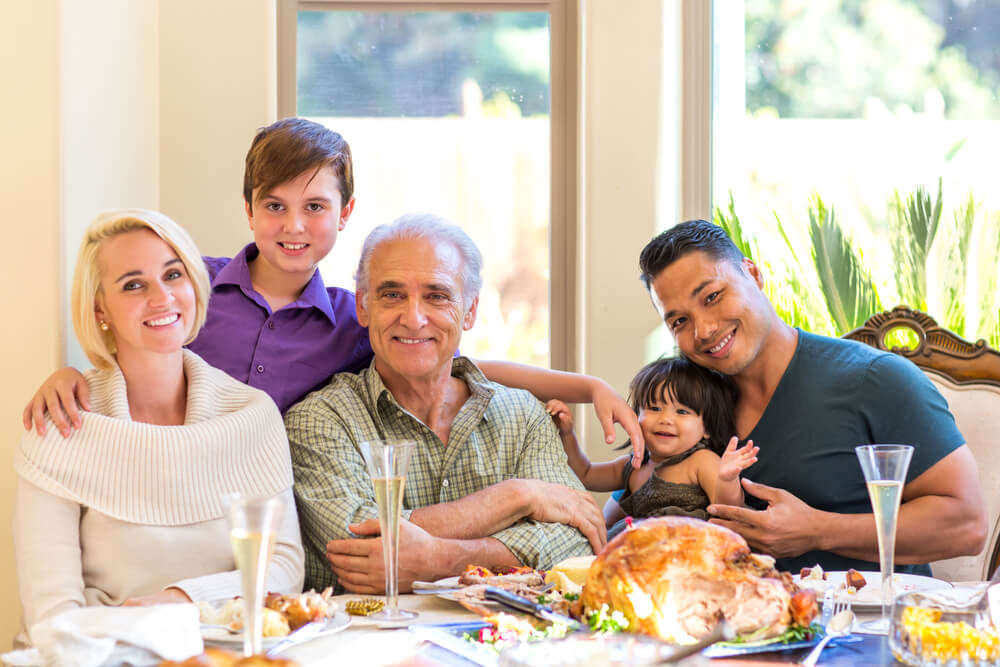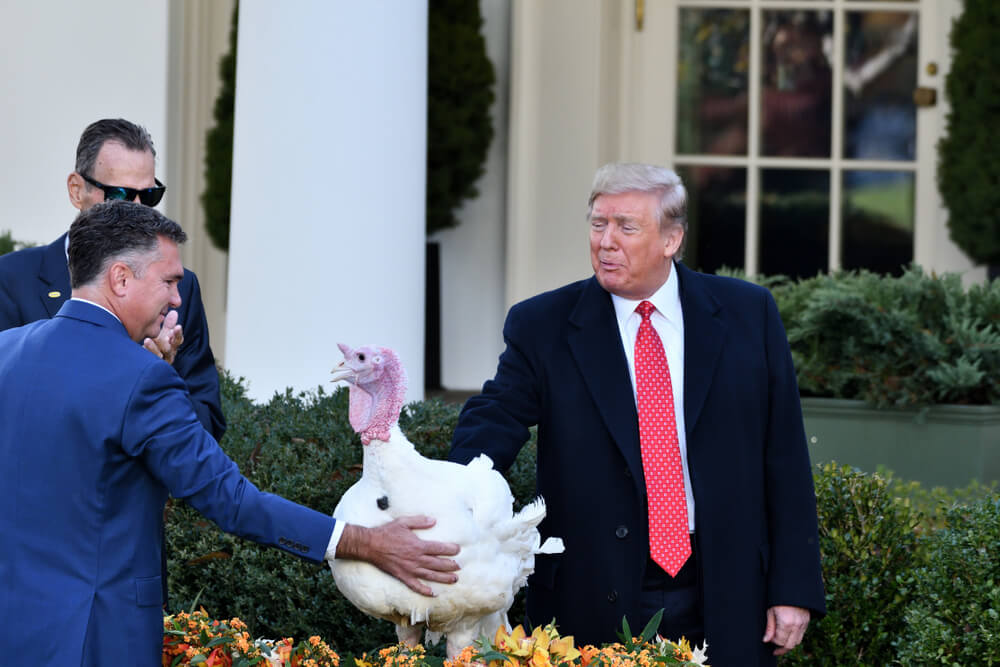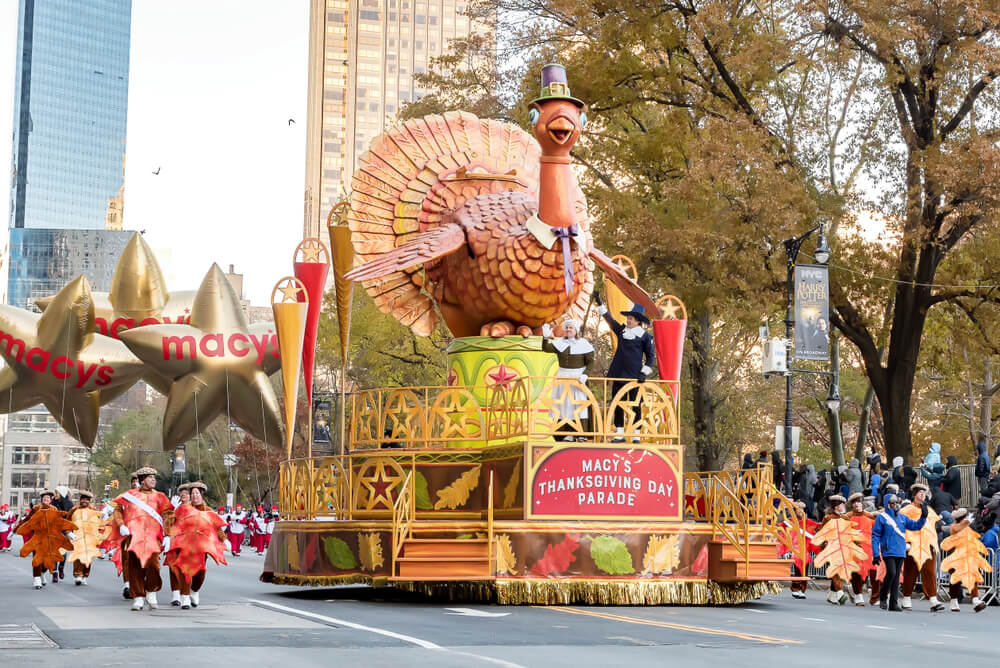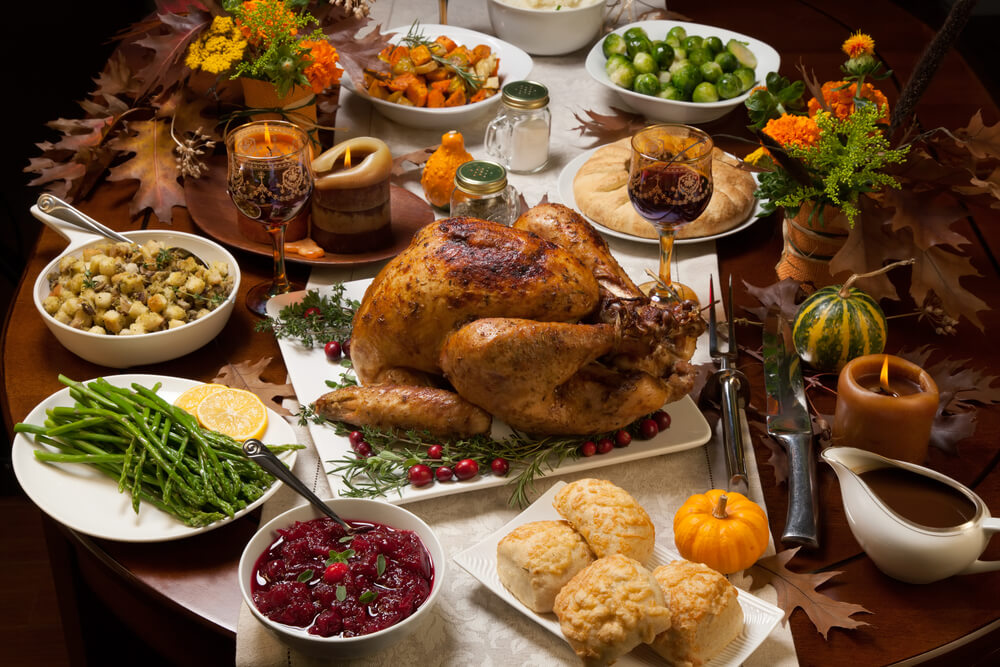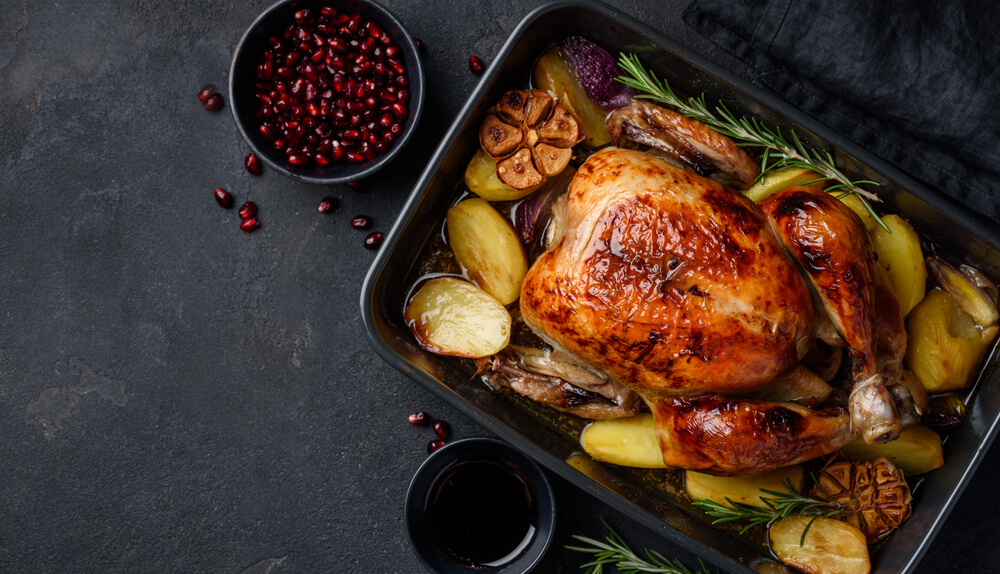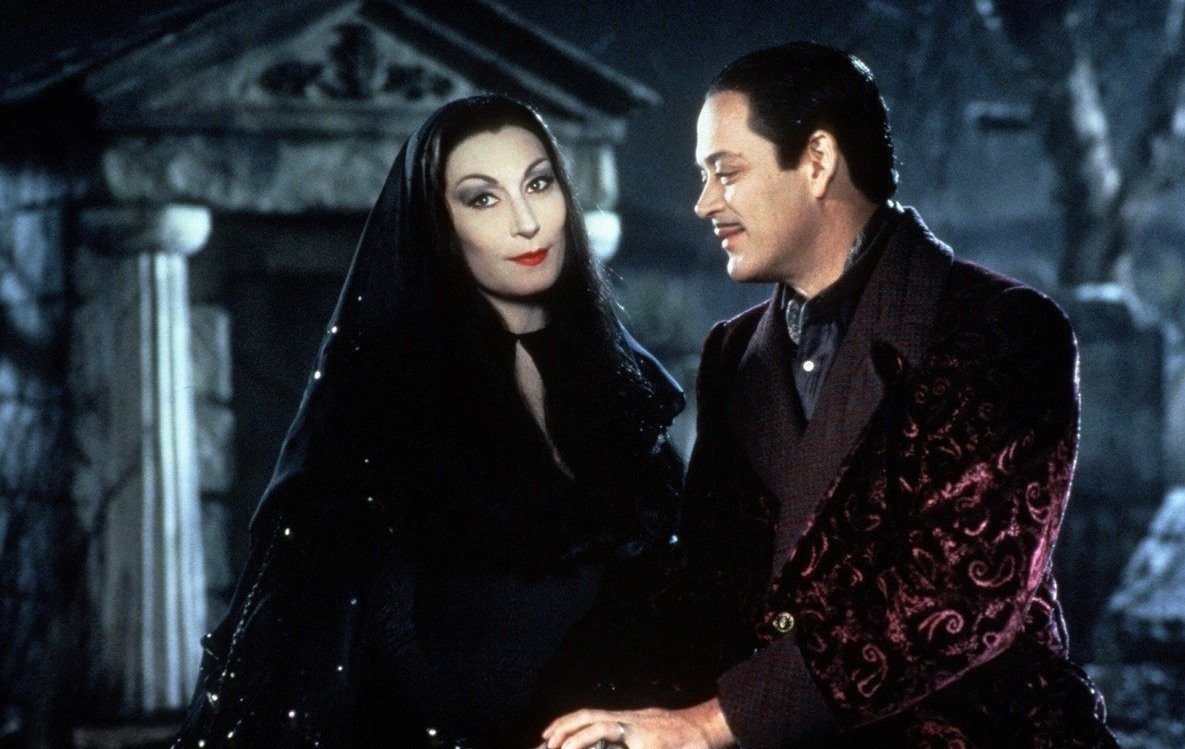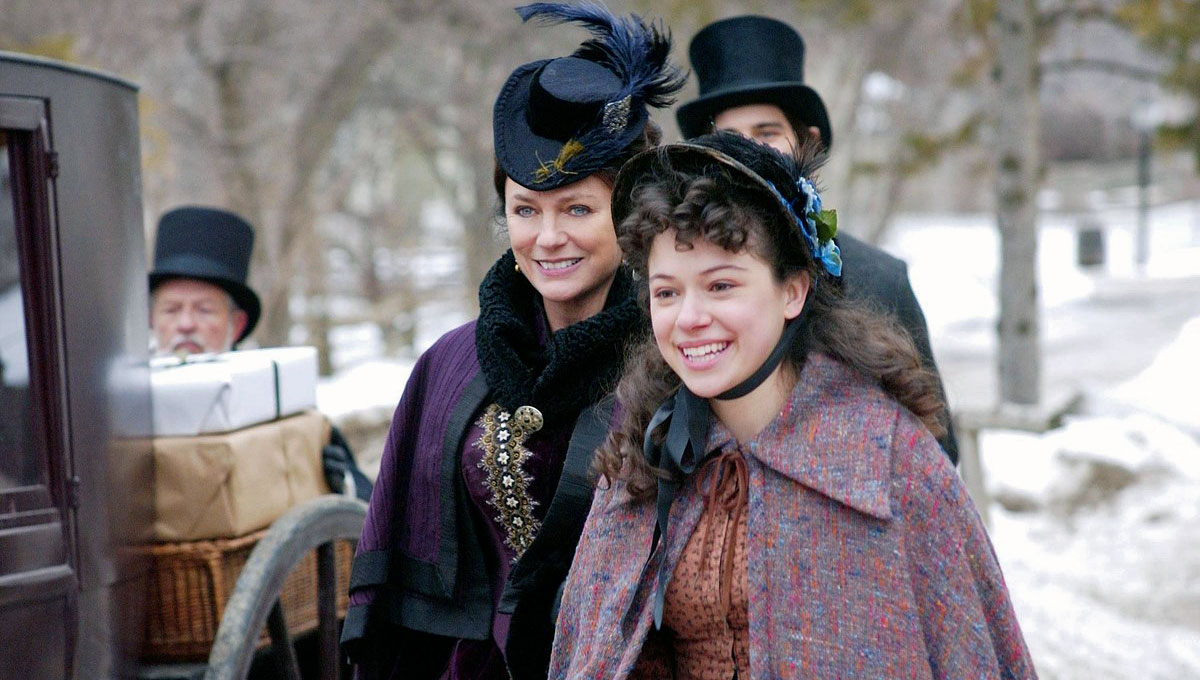Что за праздник День благодарения и почему он никогда не приживется у нас
24 ноября в США отмечают День благодарения. Что это за праздник, как он связан с Черной пятницей и почему его вряд ли будут отмечать в России, рассказываем в нашем материале
24 ноября 2022
На самом деле дело даже не в западных традициях: какие-то европейские и американские праздники вполне прижились в России. У нас вообще любят праздники — чем больше, тем лучше! Мы отмечаем Хэллоуин, празднуем католическое Рождество, выходим на парады в День святого Патрика. Наконец, все шопоголики знают Черную пятницу и Киберпонедельник! А вот с Днем благодарения как-то не сложилось. Давайте попробуем разобраться, почему.
ЧТО ТАКОЕ ДЕНЬ БЛАГОДАРЕНИЯ? КОГО И ЗА ЧТО БЛАГОДАРЯТ?
День благодарения отмечается в двух странах: США и Канаде, причем в разное время. В Канаде — «спасибо» говорят во второй понедельник октября, а в США — в четвертый четверг ноября.
Изначально это был религиозный праздник — День благодарности и признательности Богу за все те блага, что он нам приносит. Его история, как и многое в Америке, уходит корнями ко временам колонизации Нового Света и первым переселенцам, прибывшим из Англии на легендарном судне «Мэйфлауэр». Плавание было тяжелым: жестокие шторма и болезни унесли жизни многих. Но и новый континент не встретил чужеземцев гостеприимно. Англичане высадились на берег в ноябре 1620 года, и лишь половина из них смогла пережить суровую зиму. Горстка оставшихся в живых основали Плимутскую колонию на территории будущего штата Массачусетс (с которой и началось освоение Америки).
Не умереть от голода поселенцам удалось лишь благодаря местным индейцам, которые научили белых людей обращаться с неизвестными ранее сельскохозяйственными культурами и возделывать эту недружелюбную, суровую землю. И случилось чудо! Осенью колонисты собрали богатый урожай и в честь этого устроили большой праздник, в котором благодарили Господа за чудесное спасние. На него позвали и индейцев, которые разделили трапезу с поселенцами — таким был первый День благодарения.
Дж. Л. Феррис. «Первый День благодарения. 1621 год». Ок. 1912—1915. Холст, масло. Частное собрание.
Национальным праздником он стал значительно позже — его официально провозгласил первый президнет Соединенных Штатов Джордж Вашингтон в 1789 году. После окончания Гражданской войны в 1864 году Авраам Линкольн предложил назначить Днем благодарения последний четверга ноября. Окончательная дата была утверждена в 1941 году: Конгресс США принял билль, закрепивший за торжеством четвертый ноябрьский четверг. С тех пор американцы так его и празднуют.
Уинслоу Хомер (1836-1910). «Thanksgiving Day. Ways And Means», 1858. Гравюра.
КАКИЕ С ЭТИМ ПРАЗДНИКОМ СВЯЗАНЫ ТРАДИЦИИ?
В наше время День благодарения утратил свою религиозную составляющую и стал обычным светским семейным праздником, открывающим собой череду рождественских торжеств и распродаж, которые будут продолжаться весь декабрь вплоть до Нового года.
В этот день принято собираться всей семьей за большим столом в доме самых старших представителей семейства и благодарить друг друга и Господа за все хорошее, что произошло в этом году.
В честь Дня благодарения в Нью-Йорке устраивают парад Macy’s — празничное шествие с надувными куклами и платформами, которые торжественно проезжают по городу от Центрального парка до входа в знаменитый универмаг Macy’s. А на следующий день за Днем благодарения начинается Черная пятница — да-да, именно она, долгожданная дата начала рождественских распродаж!
Первый парад Macy’s прошел в 1979 году.
А за несколько дней до праздника происходит торжественная церемония вручения индейки президенту США. Обычно она проходит на лужайке перед Белым домом. Президейнту дарят индейку, а он публично дарует ей жизнь — и индейка благополучно отправляется в зоопарк встречать счастливую старость, и ей больше никогда не грозить участь оказаться на обеденном столе.
Эта традиция зародилась в 1940-х годах, первым американским президентом, помиловавшем индейку был Джон Кеннеди, но ежегодной она стала в 1989 году при Джордже Буше старшем.
Президент Джо Байден на ежегодной церемонии преподнесении индейки президенту США на лужайке Белого дома 21 ноября 2022.
Что готовят на День благодарения и как украшают стол?
По традиции, стол должен быть простым и сытным, как было у американских поселенцев на первом Дне благодарения в 1621 году. Обязательно на столе должна быть фаршированная индейка с клюквенным сиропом — символ этого праздника. К ней подают овощи, кукурузные початки, а на десерт готовят сладкий тыквенный пирог. Стол украшают тыквами, кукурузой, яблоками, виноградом, орехами, сухими листьями и другими дарам природы, в качестве основной палитры используют теплые осенние оттенки — все в оформлении стола должно говорить о процветании, богатстве и щедрости природы.
ПОЧЕМУ ЭТОТ ПРАЗНИК НЕ ПРИЖИВЕТСЯ В РОССИИ?
Ну и, наконец, давайте немного порассужаем о том, почему же этот замечательный семейный праздник никогда не приживется у нас. Как нам кажется, на то есть как минумум несколько причин.
Причина номер один: вся эта история с индейцами, поселенцами и пуританской благочестивой благодарностью Господу глубоко далека от нас и не понятна российскому обывателю. Это не маскарад с привидениями на Хэллоуин и не веселые танцующие с пивом ирландцы на День святого Патрика. А без понятной и близкой предыстории никакой праздник не будет принят другим народом как родной. В лучшем случае отношение к нему будет как у Уэнсдэй в «Семейке Аддамс».
Причина номер два: День благодарения отмчается в последний четверг ноябре, и это один из главных праздников года для американцев, второй по значимости после Рождества. А теперь представьте, если бы такой важный и масштабный праздник отмечался у нас перед Новым годом — да весь декабрь бы превратился в сплошной новогодний сабантуй!
Причина номер три: именно благодаря этому празднику в США появилась традиция выражать благодарность и говорить друг другу «спасибо» за все хорошее. Для американцев это больше, чем просто обычай, это часть их жизни. У нас же эта культура благодарения не так развита.
Ну и, наконец, у нас нет таких больших и жирных индюшек, как в Америке. Там они такие огромные, что иногда даже не помещаются в духовку! А без большой индейки во весь стол не может быть настоящего Дня благодарения. Вы только посмотрите на них!
Индюшки Chip (слева) и Chocolate (справа) на лужайке перед Белым домом перед церемонией преподнесения индейки президенту США, 21 ноября 2022.
А вы как думаете, почему у нас никогда не приживается День благодарения? Присылайте свои варианты!
День благодарения отмечается только в двух странах — США и Канаде, однако известно торжество на весь мир. Причем у американцев отношение к нему особое: они так любят этот праздник, что действия многих снятых в Голливуде фильмов и сериалов хотя бы частично происходят в день, когда принято благодарить Бога и близких людей за все хорошее.
Кстати, американцы и канадцы отмечают это торжество в разное время. Так, у граждан США говорить «спасибо» принято в ноябре, а именно в четвертый четверг последнего осеннего месяца, а у канадцев — во второй понедельник октября.
Таким образом, в 2023 году в Соединенных Штатах будут отмечать долгожданный праздник 23 ноября, а в соседней Канаде — 9 октября.
История
День благодарения особо любим американцами, так как связан он с очень важными для их страны историческими событиями. Так, этот праздник появился благодаря первым английским переселенцам, причалившим 21 ноября 1620 года на корабле «Мэйфлауэр» к берегам нового для европейцев и еще неисследованного континента. Судьба этих людей была незавидной. Так, более половины из них (а в общей сложности их было чуть более 100 человек) не смогли пережить наступившую вскоре после их прибытия зиму: к таким холодам они готовы не были, кроме того, им практически нечего было есть.
Между тем когда наступила весна, те, кому удалось выжить, основали Плимутскую колонию, которая, как известно, и дала начало заселению Северной Америки. Однако и оставшиеся переселенцы вряд ли бы протянули долго, если бы не местные жители: именно индейцы научили европейцев обрабатывать американскую землю и рассказали им, что можно выращивать в тех краях. В результате следующей осенью отцы-пилигримы собрали обильный урожай.
В связи с этим у тогдашнего (и первого) губернатора колонистов Уильяма Брэдфорда родилась идея воздать хвалу Богу за чудесное спасение: для этого в ноябре 1621 года новоиспеченные американцы устроили пир, на который пригласили в том числе и около 100 индейцев спасшего их племени. Это и был первый в истории День благодарения.
Однако следующие 150 с лишним лет праздник был неофициальным: его отмечали от случая к случаю. Национальным же он стал в 1789 году. Дело в том, что именно в XVIII веке появилось такое государство, как США, а, как известно любое молодое государство нуждается в своих собственных обычаях и традициях. Поэтому первым национальным праздником было решено сделать День благодарения и отмечать его ежегодно 26 ноября: соответствующий указ подписал первый американский лидер Джордж Вашингтон.
А в 1864 году Авраам Линкольн решил изменить дату празднования и постановил отмечать торжество в последний четверг последнего осеннего месяца.
И все было нормально, пока в 1939 году очередной американский президент Франклин Рузвельт не перенес столь важный для страны праздник на предпоследний четверг ноября. Сделал он это для продления рождественского сезона покупок. Однако его директива не носила обязательного характера, что вызвало путаницу и настоящий раскол в стране: 23 штата стали праздновать День благодарения в предпоследний ноябрьский четверг, еще 22 — в последний, а остальные — и в предпоследний, и в последний.
Лишь в 1941 году в этот вопрос была внесена ясность: именно тогда Конгресс США принял документ, закрепивший за торжеством четвертый ноябрьский четверг.
Традиции
У граждан США принято проводить праздник в кругу родственников и самых близких друзей. В этот день американцы обычно собираются на семейный праздничный обед, который устраивается в доме самых старших представителей семейства.
При этом на столе в обязательном порядке присутствуют такие блюда, как запеченная индейка в клюквенном соусе и тыквенный пирог, не обходится в День благодарения и без сладкого картофеля. По мнению историков, то же самое ели и первые переселенцы на пиру с индейцами. Есть у торжества и свой традиционный напиток — яблочный сидр.
Кстати, перед тем как приступить к трапезе все члены семьи, как правило, благодарят Бога и друг друга за все хорошее, что случилось с ними за последний год.
Еще одной традицией Дня благодарения является — «помилование» индейки. Эта церемония обычно проводится на лужайке у Белого дома накануне торжества. На ней, как водится, помимо президента Соединенных Штатов присутствуют еще две индюшки: главная виновница торжества — «национальная индейка» и ее дублер — «вице-индейка» (на случай если с первой птицей что-то случится). В ходе церемонии американский лидер по традиции зачитывает указ о помиловании главной индюшки страны (ее заместителя, как правило, тоже оставляют в живых), а затем счастливицу отправляют в зоопарк, где та и обитает до тех пор, пока не умрет естественной смертью.
Кстати, «национальную индейку» и «вице-индейку» выбирают обычные американцы. Для этого Белый дом каждый год проводит специальное голосование, в ходе которого желающим предлагается выбрать лучшую птицу из 30 пернатых кандидатов.
Помимо этого в преддверии Дня благодарения принято делать добрые дела. В частности, очень популярна среди благотворителей раздача бесплатных обедов: таким образом нуждающимся стремятся подарить ощущение праздника. Причем иногда тарелки с едой бездомным и беднякам раздает и сам президент.
Также традиционными в этот праздничный ноябрьский день являются костюмированные парады. Так, особой популярность пользуется парад, организуемый универмагом «Мейсис» (Macy’s) в Нью-Йорке. Это грандиозное шествие проходит от Центрального парка до 34-й улицы (Манхэттен), где и располагается знаменитый Macy’s, уже давно ставший одной из достопримечательностей города. При этом участники парада, среди которых обычно немало знаменитостей, несут огромные надувные фигуры персонажей популярных мультфильмов и героев комиксов. Посмотреть на это действо всегда собираются огромные толпы местных жителей и туристов.
Кроме того, в четвертый четверг последнего осеннего месяца в США, как правило, проходит праздничный футбольный матч. Поэтому многие американские мужчины проводят какую-то часть Дня благодарения перед телевизором, болея за свою любимую команду.
Стоит отметить и тот факт, что Днем благодарения обычно открывается новогодний период, когда американцы начинают активно готовиться к Рождеству и Новому году. Дело в том, что сразу после праздника в США наступает «черная пятница» и стартуют предрождественские распродажи.
«Turkey Day» redirects here. For the Turkish Republic Day, see Republic Day (Turkey).
| Thanksgiving Day | |
|---|---|

A typical North American Thanksgiving dinner |
|
| Observed by | Countries
Sub-national entities
|
| Type | National, cultural |
| Date |
|
| 2023 date | October 1, 2023 (Germany);
October 9, 2023 (Canada); November 23, 2023 (U.S. and Brazil) |
| 2024 date | October 6, 2024 (Germany);
October 14, 2024 (Canada); November 28, 2024 (U.S. and Brazil) |
Thanksgiving is a national holiday celebrated on various dates in the United States, Canada, Grenada, Saint Lucia, Liberia, and unofficially in countries like Brazil and Philippines. It is also observed in the Dutch town of Leiden and the Australian territory of Norfolk Island. It began as a day of giving thanks for the blessings of the harvest and of the preceding year. (Similarly named harvest festival holidays occur throughout the world during autumn, including in Germany and Japan). Thanksgiving is celebrated on the second Monday of October in Canada and on the fourth Thursday of November in the United States and around the same part of the year in other places. Although Thanksgiving has historical roots in religious and cultural traditions, it has long been celebrated as a secular holiday as well.
History
Prayers of thanks and special thanksgiving ceremonies are common among most religions after harvests and at other times of the year.[1] The Thanksgiving holiday’s history in North America is rooted in English traditions dating from the Protestant Reformation. It also has aspects of a harvest festival, even though the harvest in New England occurs well before the late-November date on which the modern Thanksgiving holiday is celebrated.[1][2]
In the English tradition, days of thanksgiving and special thanksgiving religious services became important during the English Reformation in the reign of Henry VIII.[3] Before 1536 there were 95 Church holidays, plus 52 Sundays, when people were required to attend church and forego work. Though the 1536 reforms in the Church of England reduced the number of holidays in the liturgical calendar to 27, the Puritan party in the Anglican Church wished to eliminate all Church holidays apart from the weekly Lord’s Day, including the evangelical feasts of Christmas and Easter (cf. Puritan Sabbatarianism).[3] The holidays were to be replaced by specially called Days of Fasting and Days of Thanksgiving, in response to events that the Puritans viewed as acts of special providence. Unexpected disasters or threats of judgement from on high called for Days of Fasting.[4][3]
Special blessings, viewed as coming from God, called for Days of Thanksgiving, which were observed through Christian church services and other gatherings.[3] For example, Days of thanksgiving were called following the victory over the Spanish Armada in 1588 and following the deliverance of Queen Anne in 1605.[4] An unusual annual Day of Thanksgiving began in 1606 following the failure of the Gunpowder Plot in 1605 and developed into Guy Fawkes Day on November 5.[4] Days of Fasting were called on account of plagues in 1604 and 1622, drought in 1611, and floods in 1613. Annual Thanksgiving prayers were dictated by the charter of English settlers upon their safe landing in America in 1619 at Berkeley Hundred in Virginia.[5]
In Canada
According to some historians, the first celebration of Thanksgiving in North America occurred during the 1578 voyage of Martin Frobisher from England in search of the Northwest Passage.[6] Other researchers, however, state that «there is no compelling narrative of the origins of the Canadian Thanksgiving day.»[7]
Antecedents for Canadian Thanksgiving are also sometimes traced to the French settlers who came to New France in the 17th century, who celebrated their successful harvests. The French settlers in the area typically had feasts at the end of the harvest season. They continued throughout the winter season, even sharing food with the indigenous peoples of the area.[8]
As settlers arrived in Nova Scotia from New England after 1700, late autumn Thanksgiving celebrations became commonplace. New immigrants into the country—such as the Irish, Scottish, and Germans—also added their own traditions to the harvest celebrations. Most of the U.S. aspects of Thanksgiving (such as the turkey) were incorporated when United Empire Loyalists began to flee from the United States during and after the American Revolution and settled in Canada.[8]
In 1859, the government of the Provinces of Canada declared a Thanksgiving Day in which «all Canadians [were asked] to spend the holiday in ‘public and solemn’ recognition of God’s mercies.»[9] On 9 October 1879, Canada’s Governor General, the Marquis of Lorne, declared November 6 as «a day of General Thanksgiving to Almighty God for the bountiful harvest with which Canada has been blessed.»[9] The Canadian Parliament on 31 January 1957 applied the same language in its proclamation for the modern holiday: «A Day of General Thanksgiving to Almighty God for the bountiful harvest with which Canada has been blessed—to be observed on the second Monday in October.»[10]
In the United States
The annual Thanksgiving holiday tradition in the United States is documented for the first time in 1619, in what is now called the Commonwealth of Virginia. Thirty-eight English settlers aboard the ship Margaret arrived by way of the James River at Berkeley Hundred in Charles City County, Virginia on December 4, 1619. The landing was immediately followed by a religious celebration, specifically dictated by the group’s charter from the London Company. The charter declared, «that the day of our ships arrival at the place assigned for plantation in the land of Virginia shall be yearly and perpetually kept holy as a day of thanksgiving to Almighty God.»[11][5] Since the mid 20th century, the original celebration has been commemorated there annually at present-day Berkeley Plantation, ancestral home of the Harrison family of Virginia.[12]
The more familiar Thanksgiving precedent is traced to the Pilgrims and Puritans who emigrated from England in the 1620s and 1630s. They brought their previous
tradition of Days of Fasting and Days of Thanksgiving with them to New England. The 1621 Plymouth, Massachusetts thanksgiving was prompted by a good harvest. The Pilgrims celebrated this with the Wampanoags, a tribe of Native Americans who, along with the last surviving Patuxet, had helped them get through the previous winter by giving them food in that time of scarcity, in exchange for an alliance and protection against the rival Narragansett tribe.[13]
Several days of Thanksgiving were held in early New England history that have been identified as the «First Thanksgiving», including Pilgrim holidays in Plymouth in 1621 and 1623, and a Puritan holiday in Boston in 1631.[14][15] According to historian Jeremy Bangs, director of the Leiden American Pilgrim Museum, the Pilgrims may have been influenced by watching the annual services of Thanksgiving for the relief of the siege of Leiden in 1574, while they were staying in Leiden.[16] Now called 3 Oktoberfeest, Leiden’s autumn thanksgiving celebration in 1617 was the occasion for sectarian disturbance that appears to have accelerated the pilgrims’ plans to emigrate to America.[17]
Later in New England, religious thanksgiving services were declared by civil leaders such as Governor Bradford, who planned the Plymouth colony’s thanksgiving celebration and feast in 1623.[18][19][20] Bradford issued a proclamation of Thanksgiving following victory in the Pequot War in the late 1630s to celebrate «the bloody victory, thanking God that the battle had been won.»[21][22] The practice of holding an annual harvest festival did not become a regular affair in New England until the late 1660s.[23]
Thanksgiving proclamations were made mostly by church leaders in New England up until 1682, and then by both state and church leaders until after the American Revolution. During the revolutionary period, political influences affected the issuance of Thanksgiving proclamations. Various proclamations were made by royal governors, and conversely by patriot leaders, such as John Hancock, General George Washington, and the Continental Congress,[24] each giving thanks to God for events favorable to their causes.[25] As President of the United States, George Washington proclaimed the first nationwide thanksgiving celebration in America marking November 26, 1789, «as a day of public thanksgiving and prayer, to be observed by acknowledging with grateful hearts the many and signal favours of Almighty God»,[26] and calling on Americans to «unite in most humbly offering our prayers and supplications to the great Lord and Ruler of Nations and beseech him to pardon our national and other transgressions.»[27]
Debate over first celebrations
Shrine of the first U.S. Thanksgiving in 1619 at Berkeley Hundred in Charles City County, Virginia
Devotees in New England and Virginia and other places have maintained contradictory claims to having held the first Thanksgiving celebration in what became the United States. The question is complicated by the concept of Thanksgiving as either a holiday celebration or a religious service. James Baker maintains, «The American holiday’s true origin was the New England Calvinist Thanksgiving. Never coupled with a Sabbath meeting, the Puritan observances were special days set aside during the week for thanksgiving and praise in response to God’s providence.»[14] Baker calls the debate a «tempest in a beanpot» and «marvelous nonsense» based on regional claims.[14]
In 1963, President John F. Kennedy acknowledged both the Virginia and Massachusetts claims. Kennedy issued Proclamation 3560 on November 5, 1963, stating, «Over three centuries ago, our forefathers in Virginia and in Massachusetts, far from home in a lonely wilderness, set aside a time of thanksgiving. On the appointed day, they gave reverent thanks for their safety, for the health of their children, for the fertility of their fields, for the love which bound them together, and for the faith which united them with their God.»[28]
Other claims include an earlier religious service by Spanish explorers in Texas at San Elizario in 1598.[29] Historians Robyn Gioia and Michael Gannon of the University of Florida argue that the earliest Thanksgiving service in what is now the United States was celebrated by the Spanish community on September 8, 1565, in current Saint Augustine, Florida.[30][31]
Fixing a date
Canada
The earlier Thanksgiving celebrations in Canada has been attributed to the earlier onset of winter in the North, thus ending the harvest season earlier.[32] Thanksgiving in Canada did not have a fixed date until the late 19th century. Prior to Canadian Confederation, many of the individual colonial governors of the Canadian provinces had declared their own days of Thanksgiving. The first official Canadian Thanksgiving occurred on April 15, 1872, when the nation was celebrating the Prince of Wales’ recovery from a serious illness.[32]
By the end of the 19th century, Thanksgiving Day was normally celebrated on November 6. In the late 19th century, the Militia staged «sham battles» for public entertainment on Thanksgiving Day. The Militia agitated for an earlier date for the holiday, so they could use the warmer weather to draw bigger crowds.[33] However, when the First World War ended, the Armistice Day holiday was usually held during the same week. To prevent the two holidays from clashing with one another, in 1957 the Canadian Parliament proclaimed Thanksgiving to be observed on its present date on the second Monday of October.[8]
United States
Thanksgiving in the United States has been observed on differing dates. From the time of the Founding Fathers until the time of Lincoln, the date of observance varied from state to state. The final Thursday in November had become the customary date in most U.S. states by the beginning of the 19th century, coinciding with, and eventually superseding the holiday of Evacuation Day (commemorating the day the British exited the United States after the Revolutionary War).[34] Modern Thanksgiving was proclaimed for all states in 1863 by Abraham Lincoln. Influenced by Sarah Josepha Hale, who wrote letters to politicians for approximately 40 years advocating an official holiday, Lincoln set national Thanksgiving by proclamation for the final Thursday in November in celebration of the bounties that had continued to fall on the Union and for the military successes in the war, also calling on the American people, «with humble penitence for our national perverseness and disobedience .. fervently implore the interposition of the Almighty hand to heal the wounds of the nation…»[35] Because of the ongoing Civil War, a nationwide Thanksgiving celebration was not realized until Reconstruction was completed in the 1870s.
On October 31, 1939, President Franklin D. Roosevelt signed a presidential proclamation changing the holiday to the next to last Thursday in November in an effort to boost the economy.[36] The earlier date created an extra seven days for Christmas shopping since at that time retailers never began promoting the Christmas season until after Thanksgiving. But making the proclamation so close to the change wreaked havoc on the holiday schedules of many people, schools, and businesses, and most Americans were not in favor of the change. Some of those who opposed dubbed the holiday «Franksgiving» that year. Some state governors went along with the change while others stuck with the original November 30 date for the holiday, and three states — Colorado, Mississippi, and Texas — observed both dates.[37] The double Thanksgiving continued for two more years, and then on December 26, 1941, Roosevelt signed a joint resolution of Congress changing the official national Thanksgiving Day to the fourth Thursday in November starting in 1942.[38]
Since 1971, when the American Uniform Monday Holiday Act took effect, the American observance of Columbus Day has coincided with the Canadian observance of Thanksgiving.[39][40]
Observance
Australia
In the Australian external territory of Norfolk Island, Thanksgiving is celebrated on the last Wednesday of November, similar to the pre–World War II American observance on the last Thursday of the month. This means the Norfolk Island observance is the day before or six days after the United States’ observance. The holiday was brought to the island by visiting American whaling ships.[41]
Brazil
In Brazil, National Thanksgiving Day was instituted by President Gaspar Dutra, through Law 781 of August 17, 1949, at the suggestion of Ambassador Joaquim Nabuco, who was enthusiastic about the commemorations he saw in 1909 in St. Patrick’s Cathedral as an ambassador in Washington. In 1966, Law 5110 established that the Thanksgiving celebration would take place on the fourth Thursday of November.[42] This date is celebrated by many families of American origin, by some Protestant Christian denominations, such as the Evangelical Lutheran Church of Brazil (which is of American origin), the Presbyterian Church, the Baptist Church, the Methodist Church, and the Church of the Nazarene, and Methodist denominational universities. The day is also celebrated by evangelical churches such as the Foursquare Gospel Church in Brazil.
Canada
Pumpkin pie is commonly served on and around Thanksgiving in North America.
Thanksgiving (French: l’Action de grâce), occurring on the second Monday in October, is an annual Canadian holiday to give thanks at the close of the harvest season. Although the original act of Parliament references God and the holiday is celebrated in churches, the holiday is mostly celebrated in a secular manner. Thanksgiving is a statutory holiday in all provinces in Canada, except for New Brunswick and Nova Scotia. While businesses may remain open in these provinces, the holiday is nonetheless recognized and celebrated regardless of its status.[43][44][45][46][47]
Grenada
In the West Indian island of Grenada, in the Caribbean, there is a national holiday known as Thanksgiving Day which is celebrated on October 25. Even though it bears the same name, and is celebrated at roughly the same time as the American and Canadian versions of Thanksgiving, this holiday is unrelated to either of those celebrations. Instead, the holiday marks the anniversary of the U.S.-led invasion of the island in 1983, in response to the deposition and execution of the socialist Grenadian Prime Minister Maurice Bishop[48] by a military government from within his own party.
Liberia
In the West African country of Liberia, Thanksgiving is celebrated on the first Thursday of November.[49] In 1883, the Legislature of Liberia enacted a statute declaring this day as a national holiday.[50] Thanksgiving is celebrated in the country in large part due to the nation’s founding as a colony of the American Colonization Society in 1821 by former slaves and free people of color from the United States. However, the Liberian celebration of the holiday is notably different from the American celebration. While some Liberian families chose to celebrate with a feast or cook out, it is not considered a staple of the holiday and there is no specific food heavily associated with Thanksgiving. Some chose to celebrate the holiday by attending religious ceremonies, while others take it as a day for relaxation. Others view the holiday as an imposition from the American settlers of the country. In the years following the second civil war, some Liberians have taken the holiday as a time to be thankful for this new period peace and relative stability.[51][52]
Netherlands
Many of the Pilgrims who migrated to the Plymouth Plantation resided in the city of Leiden from 1609 to 1620 and had recorded their births, marriages, and deaths at the Pieterskerk (St. Peter’s church). In commemoration, a non-denominational Thanksgiving Day service is held each year on the morning of the American Thanksgiving Day in the Pieterskerk, a Gothic church in Leiden, noting the hospitality the Pilgrims received in Leiden on their way to the New World.[53]
Thanksgiving is observed by orthodox Protestant churches in the Netherlands on the first Wednesday in November (Dankdag [nl]). It is not a public holiday. Those who observe the day either go to church in the evening or take the day off and go to church in the morning (and occasionally afternoon) too.
Philippines
The Philippines, while it was an American colony in the first half of the 20th century, celebrated Thanksgiving as a special public holiday on the same day as the Americans.[54] During the Japanese occupation during World War II, both the Americans and Filipinos celebrated Thanksgiving in secret. After Japanese withdrawal in 1945, the tradition continued until 1969. It was revived by President Ferdinand Marcos, but the date was changed to be on every September 21, when martial law was imposed in the country. After Marcos’ ouster in 1986, the tradition was no longer continued, due to the controversial events that occurred during his long administration.[55]
As of 2022, Thanksgiving has been revived as a commercial and cultural holiday, albeit stripped of its official status. SM Supermalls led the way in the slow revival of Thanksgiving Day on the same day as in the U.S., as in the old days. Many malls and hotels offer special sales on this day, which is part of the long celebration of Christmas in the Philippines, which begins in September (unlike on Black Friday in the United States).
Rwanda
Called Umuganura Day, this is a Thanksgiving festival to mark the start of the harvest in Rwanda. It is celebrated on the first Friday of August.[56]
Saint Lucia
The nation of Saint Lucia celebrates Thanksgiving on the first Monday in October.[57]
United States
Thanksgiving, celebrated on the fourth Thursday in November since 1941 due to federal legislation, has been an annual tradition in the United States by presidential proclamation since 1863 and by state legislation since the Founding Fathers of the United States. Traditionally, Thanksgiving has been a celebration of the blessings of the year, including the harvest.[58] On Thanksgiving Day, it is common for Americans to share a family meal, attend church services, and view special sporting events.[59] In addition, Thanksgiving is celebrated in public places with parades such as Macy’s Thanksgiving Parade[60] in New York City, ABC Dunkin’ Donuts Thanksgiving Day Parade[61] in Philadelphia, America’s Hometown Thanksgiving Parade in Plymouth, Massachusetts, McDonald’s Thanksgiving Parade in Chicago, and Bayou Classic Thanksgiving Parade[62] in New Orleans. What Americans call the «Holiday Season» generally begins with Thanksgiving.[63] The first day after Thanksgiving Day—Black Friday—marks the start of the Christmas shopping season.[64]
Thanksgiving is usually celebrated with a family meal. Beginning in the 2010s, a new tradition has emerged to also celebrate Thanksgiving with a meal with friends, as a separate event on a different day or an alternate event on Thanksgiving day. This is referred to as Friendsgiving.[65]
Similarly named holidays
Germany
A food decoration for Erntedankfest, a Christian Thanksgiving harvest festival celebrated in Germany
The Harvest Thanksgiving Festival, Erntedankfest, is a popular German Christian festival on the first Sunday of October. The festival has a significant religious component, and many churches are decorated with autumn crops. In some places, there are religious processions or parades. Many Bavarian beer festivals, like the Munich Oktoberfest, take place within the vicinity of Erntedankfest.[original research?]
Japan
Labor Thanksgiving Day (勤労感謝の日, Kinrō Kansha no Hi) is a national holiday in Japan. It takes place annually on November 23. The law establishing the holiday, which was adopted during the American occupation after World War II, cites it as an occasion for commemorating labor and production and giving each other thanks. It has roots in the ancient Shinto harvest ceremony (Niiname-sai (新嘗祭)).
United Kingdom
The Harvest Festival of Thanksgiving does not have an official date in the United Kingdom; however, it is traditionally held on or near the Sunday of the harvest moon that occurs closest to the autumnal equinox. Harvest Thanksgiving in Britain also has pre-Christian roots when the Saxons would offer the first sheaf of barley, oats, or wheat to fertility gods. When the harvest was finally collected, communities would come together for a harvest supper.[66] When Christianity arrived in Britain many traditions remained, and today the Harvest Festival is marked by churches and schools in late September/early October (same as Canada) with singing, praying and decorating with baskets of food and fruit to celebrate a successful harvest and to give thanks.[67] Collections of food are usually held which are then given to local charities which help the homeless and those in need.
See also
- Cyber Monday
- List of harvest festivals
- List of films set around Thanksgiving
- Thanksgiving Parade
References
- ^ a b Hodgson 2006, pp. 156–59.
- ^ Baker 2009a, Chapter 1, esp. pp. 12–15.
- ^ a b c d Forbes, Bruce David (October 27, 2015). America’s Favorite Holidays: Candid Histories. University of California Press. p. 155. ISBN 978-0-520-28472-2.
Prior to Henry VIII, England observed 147 religious holidays throughout the year, including Sundays. That might sound good, because they were days off work, but they were also days without pay, and church attendance was mandatory. The huge number of special days interfered with the general economy and completion of vital tasks such as harvests. So much idle time also provided occasions for troublesome public behavior. For both practical and religious reasons Henry VIII reduced the number of festival days other than Sundays to twenty-seven, but for some Puritans that still left too many. They argued that Sundays were enough, that vital Christian themes were lifted up on Sundays, and that all other holy days were unjustified Catholic additions. However, Puritans did participate in occasional days of fasting and days of thanksgiving, sometimes declared by the Church of England but developed even further by the Puritans. … A day of thanksgiving might be declared to celebrate and thank God for particular military victory, or good health following a wave of disease, or an especially bountiful harvest that saved people from starvation. … The annual days of thanksgiving consisted mainly of worship services and family dinners, and this was repeated over the years.
- ^ a b c Baker 2009a, pp. 1–14.
- ^ a b Dowdy, Clifford (1957). The Great Plantation. Rinehart and Co. pp. 29–37.
- ^ Mills, David; Neilson Bonikowsky, Laura; McIntosh, Andrew. «Thanksgiving in Canada». Canadian Encyclopedia. Historica Canada. Retrieved October 6, 2017.
- ^ Kaufman, Jason Andrew (2009). The Origins of Canadian & American Political Differences. Harvard University Press. p. 29. ISBN 978-0674031364.
- ^ a b c Solski, Ruth «Canada’s Traditions and Celebrations» McGill-Queen’s Press,ISBN 1550356941 p. 12
- ^ a b Duncan, Dorothy (September 16, 2006). Canadians at Table: Food, Fellowship, and Folklore: A Culinary History of Canada. Dundurn. ISBN 978-1-77070-235-6.
- ^ Kelch, Kalie (August 27, 2013). Grab Your Boarding Pass. Review & Herald Publishing Association. ISBN 978-0-8127-5654-8.
- ^ «The First Thanksgiving». National Geographic. Retrieved November 29, 2016.
- ^ Woodlief, H. Graham. «History of the First Thanksgiving». Berkeley Plantation. Retrieved November 23, 2021.
- ^ Julian S, The Boston Globe. «HISTORY IS SERVED». chicagotribune.com.
- ^ a b c Baker 2009a, Chapter 1.
- ^ Alvin J. Schmidt (2004). How Christianity Changed the World. Zondervan. ISBN 9780310264491. Retrieved January 30, 2012.
Their leader, Governor William Bradford, issued a formal proclamation commanding the people to give thanks to God for having received divine protection during a terrible winter and for having received their first harvest. It was also new that the Pilgrims celebrated their thanksgiving by eating wild turkey (an indigenous bird) and venison.
- ^ Jeremy Bangs. «Influences». The Pilgrims’ Leiden. Archived from the original on January 13, 2012. Retrieved September 11, 2010.
- ^ Bunker, Nick (2010). Making Haste From Babylon: the Mayflower Pilgrims and Their World. New York: Vintage Books. pp. 220–21. ISBN 9780307386267.
- ^ Bradford, Of Plymouth Plantation, 1620–1647, pp. 120–21.
- ^ Bradford, History of Plymouth Plantation, pp. 135–42.
- ^ The fast and thanksgiving days of New England by William DeLoss Love, Houghton, Mifflin and Co., Cambridge, 1895
- ^ «6 Thanksgiving Myths and the Wampanoag Side of the Story». IndianCountryToday.com. Retrieved September 20, 2020.
- ^ ESTES, NICK. (2020). OUR HISTORY IS THE FUTURE : standing rock versus the dakota access pipeline, and the long … tradition of indigenous resistance. VERSO. ISBN 978-1-78873-729-6. OCLC 1132241121.
- ^ Kaufman, Jason Andrew (2009). The origins of Canadian and American political differences. Cambridge, MA: Harvard University Press. p. 28. ISBN 978-0674031364.
- ^ Klos, Stanley. «Thanksgiving Day Proclamations». Presidential Thanksgiving Proclamations. Historic.us. Retrieved October 16, 2013.
- ^ Hodgson 2006, pp. 159–66.
- ^ Hodgson 2006, p. 167.
- ^ «Thanksgiving Proclamation, 3 October 1789». George Washington Papers. Library of Congress. Retrieved January 26, 2008.
- ^ «John F. Kennedy 35th President, Thanksgiving Proclamation, Nov. 5, 1963». The American Presidency Project. Retrieved November 24, 2016.
- ^ C. Michael Hogan (2011). Thanksgiving. Eds. Cutler Cleveland & Peter Saundry. Encyclopedia of Earth. National Council for Science and the Environment. Washington DC Archived October 25, 2012, at the Wayback Machine
- ^ Wilson, Craig (November 21, 2007). «Florida teacher chips away at Plymouth Rock Thanksgiving myth». Usatoday.com. Retrieved September 5, 2011.
- ^ Davis, Kenneth C. (November 25, 2008). «A French Connection». The New York Times. Retrieved September 5, 2011.
- ^ a b Kaufman, Jason Andrew (2009). «The origins of Canadian and American political differences» Harvard University Press, ISBN 0674031369 p. 29
- ^ Wood, James «Militia Myths: Ideas of the Canadian Citizen Soldier, 1896-1921.» UBC Press, 2010 ISBN 978-0-7748-1765-3 p.30
- ^ «Evacuation Day: New York’s Former November Holiday». November 24, 2014. Retrieved April 5, 2019.
- ^ «Thanksgiving Proclamation by Abraham Lincoln». www.abrahamlincolnonline.org. Retrieved October 30, 2018.
- ^ «31 Oct 1939, Page 1 — Green Bay Press-Gazette at Newspapers.com». Newspapers.com.
- ^ Ronald G. Shafer (November 24, 2021). «Franklin Roosevelt moved Thanksgiving up a week to goose the economy. Chaos ensued». The Washington Post.
- ^ «Congress Establishes Thanksgiving». National Archives. August 15, 2016.
- ^ «LBJ Signs Bill to Set Up Five 3-Day Holidays». Sarasota Herald-Tribune. Associated Press. June 29, 1968. Retrieved December 6, 2011.The bill became the Uniform Monday Holiday Act.
- ^ «Text of the 1968 Uniform Monday Holiday Act». US Government Archives (www.archives.gov). Retrieved December 6, 2011.
- ^ «Norfolk Island Information and Services». Archived from the original on September 20, 2010.
- ^ «Dia Nacional de Ações de Graças». Ministério da Justiça e Segurança Pública (in Brazilian Portuguese). Retrieved November 29, 2019.
- ^ «Statutory Holidays». WorkRights.ca. Archived from the original on December 18, 2010. Retrieved December 8, 2010.
- ^ «Thanksgiving – is it a Statutory Holiday?». Government of Nova Scotia. Retrieved October 13, 2008.
- ^ «Statutes, Chapter E-6.2» (PDF). Government of Prince Edward Island. Retrieved October 13, 2008.
- ^ «RSNL1990 Chapter L-2 – Labour Standards Act». Assembly of Newfoundland. Retrieved October 13, 2008.
- ^ «Statutory Holidays» (PDF). Ministry of Human Resources and Social Development, Canada. Archived from the original (PDF) on February 29, 2008.
- ^ «Public Holidays & Events 2017». GOV.gd. October 12, 2016. Retrieved April 17, 2017.
- ^ «Vice President Boakai Joins Catholic Community in Bomi to Celebrate Thanksgiving Day». The Executive Mansion. Republic of Liberia. November 5, 2010. Retrieved October 5, 2014.
- ^ «Ellen declares Thursday, 2 November as National Thanksgiving Day». The New Dawn Liberia. November 1, 2017. Retrieved December 2, 2021.
- ^ Hallett, Vicky (November 24, 2021). «Former slaves brought Thanksgiving to Liberia — and rebooted it». NPR. Retrieved December 2, 2021.
- ^ «Thanksgiving In Liberia». NPR. November 28, 2013. Retrieved December 2, 2021.
- ^ «Dutch town». The World (radio program). Retrieved November 28, 2008.
The Pilgrims arrived in Leiden in 1609, after fleeing religious persecution in England. Leiden welcomed them because it needed immigrants to help rebuild its textile industry, which had been devastated by a long revolt against Spain. Here, the Pilgrims were allowed to worship as they wanted, and they even published their arguments calling for the separation of church and state. Jeremy Bangs of the Leiden American Pilgrim Museum says the Pilgrims quickly adopted Dutch customs like civil marriage and Thanksgiving.
- ^ «Thanksgiving in Philippines: First Celebration of the American Holiday in Eastern Colony». The St. Joseph Weekly Gazette. December 27, 1898. p. 7. Retrieved September 24, 2022.
- ^ «Thanksgiving in the Philippines». Philippine Presidential Museum and Library. Archived from the original on November 29, 2014. Retrieved November 27, 2015.
- ^ «Umuganura Day in Rwanda in 2020». Office Holidays. Retrieved April 26, 2020.
- ^ «Saint Lucia’s List of Holidays for the Year 2015» (PDF). Stluciachamber.org. Archived from the original (PDF) on March 14, 2016. Retrieved April 17, 2017.
- ^
«Thanksgiving Day». Encyclopædia Britannica. Retrieved November 25, 2011. - ^ Counihan, Carole (October 18, 2013). Food in the USA: A Reader. Routledge. p. 5. ISBN 978-1-135-32359-2.
Football games are scheduled and televised throughout the nation; an elaborately constructed, now traditional Macy’s parade may be viewed. There are special services, which some attend, and turkeys and other foods are given by churches and other charitable organizations to the poor.
- ^ «Macy’s Thanksgiving Day Parade». Retrieved April 5, 2019.
- ^ «6ABC THANKSGIVING DAY PARADE». Retrieved April 5, 2019.
- ^ «Bayou Classic». Retrieved April 5, 2019.
- ^ Hargis, Toni (November 4, 2013). «A Brit’s Guide to the Holiday Season». BBC America.
- ^ «When is Thanksgiving Day and why is it celebrated». November 22, 2018. Retrieved April 5, 2019.
- ^ Fetters, Ashley (November 15, 2018). «How Friendsgiving Took Over Millennial Culture». The Atlantic. Retrieved May 4, 2022.
- ^ «Harvest Festival UK». Crewsnest.vispa.com. Archived from the original on January 28, 2020. Retrieved April 17, 2017.
- ^ «Harvest Festival». resources.woodlands-junior.kent.sch.uk. Archived from the original on June 23, 2015. Retrieved June 18, 2015 – via projectbritain.com.
Sources
- Baker, James W. (2009). Thanksgiving: The Biography of an American Holiday. UPNE. ISBN 978-1-58465-801-6.
- Bangs, Jeremy D. «Thanksgiving on the Net: Roast Bull with Cranberry Sauce». Sail 1620. Society of Mayflower Descendants in the Commonwealth of Pennsylvania. Archived from the original on November 2, 2012. Retrieved October 23, 2012.
- Colman, Penny (2008). Thanksgiving: The True Story. Macmillan. p. 149. ISBN 978-0805082296.
- Dow, Judy; Slapin, Beverly (June 12, 2006). «Deconstructing the Myths of «The First Thanksgiving»«. Oyate.org. Archived from the original on November 29, 2010. Retrieved November 29, 2010.
- Hillstrom, Laurie Collier (2007). The Thanksgiving book: a companion to the holiday covering its history, lore, … Omnigraphics. p. 328. ISBN 978-0780804036.
- Hodgson, Godfrey (2006). A Great and Godly Adventure; The Pilgrims and the Myth of the First Thanksgiving. New York: Public Affairs. p. 212. ISBN 978-1586483739.
External links
- Thanksgiving at Curlie
«Turkey Day» redirects here. For the Turkish Republic Day, see Republic Day (Turkey).
| Thanksgiving Day | |
|---|---|

A typical North American Thanksgiving dinner |
|
| Observed by | Countries
Sub-national entities
|
| Type | National, cultural |
| Date |
|
| 2023 date | October 1, 2023 (Germany);
October 9, 2023 (Canada); November 23, 2023 (U.S. and Brazil) |
| 2024 date | October 6, 2024 (Germany);
October 14, 2024 (Canada); November 28, 2024 (U.S. and Brazil) |
Thanksgiving is a national holiday celebrated on various dates in the United States, Canada, Grenada, Saint Lucia, Liberia, and unofficially in countries like Brazil and Philippines. It is also observed in the Dutch town of Leiden and the Australian territory of Norfolk Island. It began as a day of giving thanks for the blessings of the harvest and of the preceding year. (Similarly named harvest festival holidays occur throughout the world during autumn, including in Germany and Japan). Thanksgiving is celebrated on the second Monday of October in Canada and on the fourth Thursday of November in the United States and around the same part of the year in other places. Although Thanksgiving has historical roots in religious and cultural traditions, it has long been celebrated as a secular holiday as well.
History
Prayers of thanks and special thanksgiving ceremonies are common among most religions after harvests and at other times of the year.[1] The Thanksgiving holiday’s history in North America is rooted in English traditions dating from the Protestant Reformation. It also has aspects of a harvest festival, even though the harvest in New England occurs well before the late-November date on which the modern Thanksgiving holiday is celebrated.[1][2]
In the English tradition, days of thanksgiving and special thanksgiving religious services became important during the English Reformation in the reign of Henry VIII.[3] Before 1536 there were 95 Church holidays, plus 52 Sundays, when people were required to attend church and forego work. Though the 1536 reforms in the Church of England reduced the number of holidays in the liturgical calendar to 27, the Puritan party in the Anglican Church wished to eliminate all Church holidays apart from the weekly Lord’s Day, including the evangelical feasts of Christmas and Easter (cf. Puritan Sabbatarianism).[3] The holidays were to be replaced by specially called Days of Fasting and Days of Thanksgiving, in response to events that the Puritans viewed as acts of special providence. Unexpected disasters or threats of judgement from on high called for Days of Fasting.[4][3]
Special blessings, viewed as coming from God, called for Days of Thanksgiving, which were observed through Christian church services and other gatherings.[3] For example, Days of thanksgiving were called following the victory over the Spanish Armada in 1588 and following the deliverance of Queen Anne in 1605.[4] An unusual annual Day of Thanksgiving began in 1606 following the failure of the Gunpowder Plot in 1605 and developed into Guy Fawkes Day on November 5.[4] Days of Fasting were called on account of plagues in 1604 and 1622, drought in 1611, and floods in 1613. Annual Thanksgiving prayers were dictated by the charter of English settlers upon their safe landing in America in 1619 at Berkeley Hundred in Virginia.[5]
In Canada
According to some historians, the first celebration of Thanksgiving in North America occurred during the 1578 voyage of Martin Frobisher from England in search of the Northwest Passage.[6] Other researchers, however, state that «there is no compelling narrative of the origins of the Canadian Thanksgiving day.»[7]
Antecedents for Canadian Thanksgiving are also sometimes traced to the French settlers who came to New France in the 17th century, who celebrated their successful harvests. The French settlers in the area typically had feasts at the end of the harvest season. They continued throughout the winter season, even sharing food with the indigenous peoples of the area.[8]
As settlers arrived in Nova Scotia from New England after 1700, late autumn Thanksgiving celebrations became commonplace. New immigrants into the country—such as the Irish, Scottish, and Germans—also added their own traditions to the harvest celebrations. Most of the U.S. aspects of Thanksgiving (such as the turkey) were incorporated when United Empire Loyalists began to flee from the United States during and after the American Revolution and settled in Canada.[8]
In 1859, the government of the Provinces of Canada declared a Thanksgiving Day in which «all Canadians [were asked] to spend the holiday in ‘public and solemn’ recognition of God’s mercies.»[9] On 9 October 1879, Canada’s Governor General, the Marquis of Lorne, declared November 6 as «a day of General Thanksgiving to Almighty God for the bountiful harvest with which Canada has been blessed.»[9] The Canadian Parliament on 31 January 1957 applied the same language in its proclamation for the modern holiday: «A Day of General Thanksgiving to Almighty God for the bountiful harvest with which Canada has been blessed—to be observed on the second Monday in October.»[10]
In the United States
The annual Thanksgiving holiday tradition in the United States is documented for the first time in 1619, in what is now called the Commonwealth of Virginia. Thirty-eight English settlers aboard the ship Margaret arrived by way of the James River at Berkeley Hundred in Charles City County, Virginia on December 4, 1619. The landing was immediately followed by a religious celebration, specifically dictated by the group’s charter from the London Company. The charter declared, «that the day of our ships arrival at the place assigned for plantation in the land of Virginia shall be yearly and perpetually kept holy as a day of thanksgiving to Almighty God.»[11][5] Since the mid 20th century, the original celebration has been commemorated there annually at present-day Berkeley Plantation, ancestral home of the Harrison family of Virginia.[12]
The more familiar Thanksgiving precedent is traced to the Pilgrims and Puritans who emigrated from England in the 1620s and 1630s. They brought their previous
tradition of Days of Fasting and Days of Thanksgiving with them to New England. The 1621 Plymouth, Massachusetts thanksgiving was prompted by a good harvest. The Pilgrims celebrated this with the Wampanoags, a tribe of Native Americans who, along with the last surviving Patuxet, had helped them get through the previous winter by giving them food in that time of scarcity, in exchange for an alliance and protection against the rival Narragansett tribe.[13]
Several days of Thanksgiving were held in early New England history that have been identified as the «First Thanksgiving», including Pilgrim holidays in Plymouth in 1621 and 1623, and a Puritan holiday in Boston in 1631.[14][15] According to historian Jeremy Bangs, director of the Leiden American Pilgrim Museum, the Pilgrims may have been influenced by watching the annual services of Thanksgiving for the relief of the siege of Leiden in 1574, while they were staying in Leiden.[16] Now called 3 Oktoberfeest, Leiden’s autumn thanksgiving celebration in 1617 was the occasion for sectarian disturbance that appears to have accelerated the pilgrims’ plans to emigrate to America.[17]
Later in New England, religious thanksgiving services were declared by civil leaders such as Governor Bradford, who planned the Plymouth colony’s thanksgiving celebration and feast in 1623.[18][19][20] Bradford issued a proclamation of Thanksgiving following victory in the Pequot War in the late 1630s to celebrate «the bloody victory, thanking God that the battle had been won.»[21][22] The practice of holding an annual harvest festival did not become a regular affair in New England until the late 1660s.[23]
Thanksgiving proclamations were made mostly by church leaders in New England up until 1682, and then by both state and church leaders until after the American Revolution. During the revolutionary period, political influences affected the issuance of Thanksgiving proclamations. Various proclamations were made by royal governors, and conversely by patriot leaders, such as John Hancock, General George Washington, and the Continental Congress,[24] each giving thanks to God for events favorable to their causes.[25] As President of the United States, George Washington proclaimed the first nationwide thanksgiving celebration in America marking November 26, 1789, «as a day of public thanksgiving and prayer, to be observed by acknowledging with grateful hearts the many and signal favours of Almighty God»,[26] and calling on Americans to «unite in most humbly offering our prayers and supplications to the great Lord and Ruler of Nations and beseech him to pardon our national and other transgressions.»[27]
Debate over first celebrations
Shrine of the first U.S. Thanksgiving in 1619 at Berkeley Hundred in Charles City County, Virginia
Devotees in New England and Virginia and other places have maintained contradictory claims to having held the first Thanksgiving celebration in what became the United States. The question is complicated by the concept of Thanksgiving as either a holiday celebration or a religious service. James Baker maintains, «The American holiday’s true origin was the New England Calvinist Thanksgiving. Never coupled with a Sabbath meeting, the Puritan observances were special days set aside during the week for thanksgiving and praise in response to God’s providence.»[14] Baker calls the debate a «tempest in a beanpot» and «marvelous nonsense» based on regional claims.[14]
In 1963, President John F. Kennedy acknowledged both the Virginia and Massachusetts claims. Kennedy issued Proclamation 3560 on November 5, 1963, stating, «Over three centuries ago, our forefathers in Virginia and in Massachusetts, far from home in a lonely wilderness, set aside a time of thanksgiving. On the appointed day, they gave reverent thanks for their safety, for the health of their children, for the fertility of their fields, for the love which bound them together, and for the faith which united them with their God.»[28]
Other claims include an earlier religious service by Spanish explorers in Texas at San Elizario in 1598.[29] Historians Robyn Gioia and Michael Gannon of the University of Florida argue that the earliest Thanksgiving service in what is now the United States was celebrated by the Spanish community on September 8, 1565, in current Saint Augustine, Florida.[30][31]
Fixing a date
Canada
The earlier Thanksgiving celebrations in Canada has been attributed to the earlier onset of winter in the North, thus ending the harvest season earlier.[32] Thanksgiving in Canada did not have a fixed date until the late 19th century. Prior to Canadian Confederation, many of the individual colonial governors of the Canadian provinces had declared their own days of Thanksgiving. The first official Canadian Thanksgiving occurred on April 15, 1872, when the nation was celebrating the Prince of Wales’ recovery from a serious illness.[32]
By the end of the 19th century, Thanksgiving Day was normally celebrated on November 6. In the late 19th century, the Militia staged «sham battles» for public entertainment on Thanksgiving Day. The Militia agitated for an earlier date for the holiday, so they could use the warmer weather to draw bigger crowds.[33] However, when the First World War ended, the Armistice Day holiday was usually held during the same week. To prevent the two holidays from clashing with one another, in 1957 the Canadian Parliament proclaimed Thanksgiving to be observed on its present date on the second Monday of October.[8]
United States
Thanksgiving in the United States has been observed on differing dates. From the time of the Founding Fathers until the time of Lincoln, the date of observance varied from state to state. The final Thursday in November had become the customary date in most U.S. states by the beginning of the 19th century, coinciding with, and eventually superseding the holiday of Evacuation Day (commemorating the day the British exited the United States after the Revolutionary War).[34] Modern Thanksgiving was proclaimed for all states in 1863 by Abraham Lincoln. Influenced by Sarah Josepha Hale, who wrote letters to politicians for approximately 40 years advocating an official holiday, Lincoln set national Thanksgiving by proclamation for the final Thursday in November in celebration of the bounties that had continued to fall on the Union and for the military successes in the war, also calling on the American people, «with humble penitence for our national perverseness and disobedience .. fervently implore the interposition of the Almighty hand to heal the wounds of the nation…»[35] Because of the ongoing Civil War, a nationwide Thanksgiving celebration was not realized until Reconstruction was completed in the 1870s.
On October 31, 1939, President Franklin D. Roosevelt signed a presidential proclamation changing the holiday to the next to last Thursday in November in an effort to boost the economy.[36] The earlier date created an extra seven days for Christmas shopping since at that time retailers never began promoting the Christmas season until after Thanksgiving. But making the proclamation so close to the change wreaked havoc on the holiday schedules of many people, schools, and businesses, and most Americans were not in favor of the change. Some of those who opposed dubbed the holiday «Franksgiving» that year. Some state governors went along with the change while others stuck with the original November 30 date for the holiday, and three states — Colorado, Mississippi, and Texas — observed both dates.[37] The double Thanksgiving continued for two more years, and then on December 26, 1941, Roosevelt signed a joint resolution of Congress changing the official national Thanksgiving Day to the fourth Thursday in November starting in 1942.[38]
Since 1971, when the American Uniform Monday Holiday Act took effect, the American observance of Columbus Day has coincided with the Canadian observance of Thanksgiving.[39][40]
Observance
Australia
In the Australian external territory of Norfolk Island, Thanksgiving is celebrated on the last Wednesday of November, similar to the pre–World War II American observance on the last Thursday of the month. This means the Norfolk Island observance is the day before or six days after the United States’ observance. The holiday was brought to the island by visiting American whaling ships.[41]
Brazil
In Brazil, National Thanksgiving Day was instituted by President Gaspar Dutra, through Law 781 of August 17, 1949, at the suggestion of Ambassador Joaquim Nabuco, who was enthusiastic about the commemorations he saw in 1909 in St. Patrick’s Cathedral as an ambassador in Washington. In 1966, Law 5110 established that the Thanksgiving celebration would take place on the fourth Thursday of November.[42] This date is celebrated by many families of American origin, by some Protestant Christian denominations, such as the Evangelical Lutheran Church of Brazil (which is of American origin), the Presbyterian Church, the Baptist Church, the Methodist Church, and the Church of the Nazarene, and Methodist denominational universities. The day is also celebrated by evangelical churches such as the Foursquare Gospel Church in Brazil.
Canada
Pumpkin pie is commonly served on and around Thanksgiving in North America.
Thanksgiving (French: l’Action de grâce), occurring on the second Monday in October, is an annual Canadian holiday to give thanks at the close of the harvest season. Although the original act of Parliament references God and the holiday is celebrated in churches, the holiday is mostly celebrated in a secular manner. Thanksgiving is a statutory holiday in all provinces in Canada, except for New Brunswick and Nova Scotia. While businesses may remain open in these provinces, the holiday is nonetheless recognized and celebrated regardless of its status.[43][44][45][46][47]
Grenada
In the West Indian island of Grenada, in the Caribbean, there is a national holiday known as Thanksgiving Day which is celebrated on October 25. Even though it bears the same name, and is celebrated at roughly the same time as the American and Canadian versions of Thanksgiving, this holiday is unrelated to either of those celebrations. Instead, the holiday marks the anniversary of the U.S.-led invasion of the island in 1983, in response to the deposition and execution of the socialist Grenadian Prime Minister Maurice Bishop[48] by a military government from within his own party.
Liberia
In the West African country of Liberia, Thanksgiving is celebrated on the first Thursday of November.[49] In 1883, the Legislature of Liberia enacted a statute declaring this day as a national holiday.[50] Thanksgiving is celebrated in the country in large part due to the nation’s founding as a colony of the American Colonization Society in 1821 by former slaves and free people of color from the United States. However, the Liberian celebration of the holiday is notably different from the American celebration. While some Liberian families chose to celebrate with a feast or cook out, it is not considered a staple of the holiday and there is no specific food heavily associated with Thanksgiving. Some chose to celebrate the holiday by attending religious ceremonies, while others take it as a day for relaxation. Others view the holiday as an imposition from the American settlers of the country. In the years following the second civil war, some Liberians have taken the holiday as a time to be thankful for this new period peace and relative stability.[51][52]
Netherlands
Many of the Pilgrims who migrated to the Plymouth Plantation resided in the city of Leiden from 1609 to 1620 and had recorded their births, marriages, and deaths at the Pieterskerk (St. Peter’s church). In commemoration, a non-denominational Thanksgiving Day service is held each year on the morning of the American Thanksgiving Day in the Pieterskerk, a Gothic church in Leiden, noting the hospitality the Pilgrims received in Leiden on their way to the New World.[53]
Thanksgiving is observed by orthodox Protestant churches in the Netherlands on the first Wednesday in November (Dankdag [nl]). It is not a public holiday. Those who observe the day either go to church in the evening or take the day off and go to church in the morning (and occasionally afternoon) too.
Philippines
The Philippines, while it was an American colony in the first half of the 20th century, celebrated Thanksgiving as a special public holiday on the same day as the Americans.[54] During the Japanese occupation during World War II, both the Americans and Filipinos celebrated Thanksgiving in secret. After Japanese withdrawal in 1945, the tradition continued until 1969. It was revived by President Ferdinand Marcos, but the date was changed to be on every September 21, when martial law was imposed in the country. After Marcos’ ouster in 1986, the tradition was no longer continued, due to the controversial events that occurred during his long administration.[55]
As of 2022, Thanksgiving has been revived as a commercial and cultural holiday, albeit stripped of its official status. SM Supermalls led the way in the slow revival of Thanksgiving Day on the same day as in the U.S., as in the old days. Many malls and hotels offer special sales on this day, which is part of the long celebration of Christmas in the Philippines, which begins in September (unlike on Black Friday in the United States).
Rwanda
Called Umuganura Day, this is a Thanksgiving festival to mark the start of the harvest in Rwanda. It is celebrated on the first Friday of August.[56]
Saint Lucia
The nation of Saint Lucia celebrates Thanksgiving on the first Monday in October.[57]
United States
Thanksgiving, celebrated on the fourth Thursday in November since 1941 due to federal legislation, has been an annual tradition in the United States by presidential proclamation since 1863 and by state legislation since the Founding Fathers of the United States. Traditionally, Thanksgiving has been a celebration of the blessings of the year, including the harvest.[58] On Thanksgiving Day, it is common for Americans to share a family meal, attend church services, and view special sporting events.[59] In addition, Thanksgiving is celebrated in public places with parades such as Macy’s Thanksgiving Parade[60] in New York City, ABC Dunkin’ Donuts Thanksgiving Day Parade[61] in Philadelphia, America’s Hometown Thanksgiving Parade in Plymouth, Massachusetts, McDonald’s Thanksgiving Parade in Chicago, and Bayou Classic Thanksgiving Parade[62] in New Orleans. What Americans call the «Holiday Season» generally begins with Thanksgiving.[63] The first day after Thanksgiving Day—Black Friday—marks the start of the Christmas shopping season.[64]
Thanksgiving is usually celebrated with a family meal. Beginning in the 2010s, a new tradition has emerged to also celebrate Thanksgiving with a meal with friends, as a separate event on a different day or an alternate event on Thanksgiving day. This is referred to as Friendsgiving.[65]
Similarly named holidays
Germany
A food decoration for Erntedankfest, a Christian Thanksgiving harvest festival celebrated in Germany
The Harvest Thanksgiving Festival, Erntedankfest, is a popular German Christian festival on the first Sunday of October. The festival has a significant religious component, and many churches are decorated with autumn crops. In some places, there are religious processions or parades. Many Bavarian beer festivals, like the Munich Oktoberfest, take place within the vicinity of Erntedankfest.[original research?]
Japan
Labor Thanksgiving Day (勤労感謝の日, Kinrō Kansha no Hi) is a national holiday in Japan. It takes place annually on November 23. The law establishing the holiday, which was adopted during the American occupation after World War II, cites it as an occasion for commemorating labor and production and giving each other thanks. It has roots in the ancient Shinto harvest ceremony (Niiname-sai (新嘗祭)).
United Kingdom
The Harvest Festival of Thanksgiving does not have an official date in the United Kingdom; however, it is traditionally held on or near the Sunday of the harvest moon that occurs closest to the autumnal equinox. Harvest Thanksgiving in Britain also has pre-Christian roots when the Saxons would offer the first sheaf of barley, oats, or wheat to fertility gods. When the harvest was finally collected, communities would come together for a harvest supper.[66] When Christianity arrived in Britain many traditions remained, and today the Harvest Festival is marked by churches and schools in late September/early October (same as Canada) with singing, praying and decorating with baskets of food and fruit to celebrate a successful harvest and to give thanks.[67] Collections of food are usually held which are then given to local charities which help the homeless and those in need.
See also
- Cyber Monday
- List of harvest festivals
- List of films set around Thanksgiving
- Thanksgiving Parade
References
- ^ a b Hodgson 2006, pp. 156–59.
- ^ Baker 2009a, Chapter 1, esp. pp. 12–15.
- ^ a b c d Forbes, Bruce David (October 27, 2015). America’s Favorite Holidays: Candid Histories. University of California Press. p. 155. ISBN 978-0-520-28472-2.
Prior to Henry VIII, England observed 147 religious holidays throughout the year, including Sundays. That might sound good, because they were days off work, but they were also days without pay, and church attendance was mandatory. The huge number of special days interfered with the general economy and completion of vital tasks such as harvests. So much idle time also provided occasions for troublesome public behavior. For both practical and religious reasons Henry VIII reduced the number of festival days other than Sundays to twenty-seven, but for some Puritans that still left too many. They argued that Sundays were enough, that vital Christian themes were lifted up on Sundays, and that all other holy days were unjustified Catholic additions. However, Puritans did participate in occasional days of fasting and days of thanksgiving, sometimes declared by the Church of England but developed even further by the Puritans. … A day of thanksgiving might be declared to celebrate and thank God for particular military victory, or good health following a wave of disease, or an especially bountiful harvest that saved people from starvation. … The annual days of thanksgiving consisted mainly of worship services and family dinners, and this was repeated over the years.
- ^ a b c Baker 2009a, pp. 1–14.
- ^ a b Dowdy, Clifford (1957). The Great Plantation. Rinehart and Co. pp. 29–37.
- ^ Mills, David; Neilson Bonikowsky, Laura; McIntosh, Andrew. «Thanksgiving in Canada». Canadian Encyclopedia. Historica Canada. Retrieved October 6, 2017.
- ^ Kaufman, Jason Andrew (2009). The Origins of Canadian & American Political Differences. Harvard University Press. p. 29. ISBN 978-0674031364.
- ^ a b c Solski, Ruth «Canada’s Traditions and Celebrations» McGill-Queen’s Press,ISBN 1550356941 p. 12
- ^ a b Duncan, Dorothy (September 16, 2006). Canadians at Table: Food, Fellowship, and Folklore: A Culinary History of Canada. Dundurn. ISBN 978-1-77070-235-6.
- ^ Kelch, Kalie (August 27, 2013). Grab Your Boarding Pass. Review & Herald Publishing Association. ISBN 978-0-8127-5654-8.
- ^ «The First Thanksgiving». National Geographic. Retrieved November 29, 2016.
- ^ Woodlief, H. Graham. «History of the First Thanksgiving». Berkeley Plantation. Retrieved November 23, 2021.
- ^ Julian S, The Boston Globe. «HISTORY IS SERVED». chicagotribune.com.
- ^ a b c Baker 2009a, Chapter 1.
- ^ Alvin J. Schmidt (2004). How Christianity Changed the World. Zondervan. ISBN 9780310264491. Retrieved January 30, 2012.
Their leader, Governor William Bradford, issued a formal proclamation commanding the people to give thanks to God for having received divine protection during a terrible winter and for having received their first harvest. It was also new that the Pilgrims celebrated their thanksgiving by eating wild turkey (an indigenous bird) and venison.
- ^ Jeremy Bangs. «Influences». The Pilgrims’ Leiden. Archived from the original on January 13, 2012. Retrieved September 11, 2010.
- ^ Bunker, Nick (2010). Making Haste From Babylon: the Mayflower Pilgrims and Their World. New York: Vintage Books. pp. 220–21. ISBN 9780307386267.
- ^ Bradford, Of Plymouth Plantation, 1620–1647, pp. 120–21.
- ^ Bradford, History of Plymouth Plantation, pp. 135–42.
- ^ The fast and thanksgiving days of New England by William DeLoss Love, Houghton, Mifflin and Co., Cambridge, 1895
- ^ «6 Thanksgiving Myths and the Wampanoag Side of the Story». IndianCountryToday.com. Retrieved September 20, 2020.
- ^ ESTES, NICK. (2020). OUR HISTORY IS THE FUTURE : standing rock versus the dakota access pipeline, and the long … tradition of indigenous resistance. VERSO. ISBN 978-1-78873-729-6. OCLC 1132241121.
- ^ Kaufman, Jason Andrew (2009). The origins of Canadian and American political differences. Cambridge, MA: Harvard University Press. p. 28. ISBN 978-0674031364.
- ^ Klos, Stanley. «Thanksgiving Day Proclamations». Presidential Thanksgiving Proclamations. Historic.us. Retrieved October 16, 2013.
- ^ Hodgson 2006, pp. 159–66.
- ^ Hodgson 2006, p. 167.
- ^ «Thanksgiving Proclamation, 3 October 1789». George Washington Papers. Library of Congress. Retrieved January 26, 2008.
- ^ «John F. Kennedy 35th President, Thanksgiving Proclamation, Nov. 5, 1963». The American Presidency Project. Retrieved November 24, 2016.
- ^ C. Michael Hogan (2011). Thanksgiving. Eds. Cutler Cleveland & Peter Saundry. Encyclopedia of Earth. National Council for Science and the Environment. Washington DC Archived October 25, 2012, at the Wayback Machine
- ^ Wilson, Craig (November 21, 2007). «Florida teacher chips away at Plymouth Rock Thanksgiving myth». Usatoday.com. Retrieved September 5, 2011.
- ^ Davis, Kenneth C. (November 25, 2008). «A French Connection». The New York Times. Retrieved September 5, 2011.
- ^ a b Kaufman, Jason Andrew (2009). «The origins of Canadian and American political differences» Harvard University Press, ISBN 0674031369 p. 29
- ^ Wood, James «Militia Myths: Ideas of the Canadian Citizen Soldier, 1896-1921.» UBC Press, 2010 ISBN 978-0-7748-1765-3 p.30
- ^ «Evacuation Day: New York’s Former November Holiday». November 24, 2014. Retrieved April 5, 2019.
- ^ «Thanksgiving Proclamation by Abraham Lincoln». www.abrahamlincolnonline.org. Retrieved October 30, 2018.
- ^ «31 Oct 1939, Page 1 — Green Bay Press-Gazette at Newspapers.com». Newspapers.com.
- ^ Ronald G. Shafer (November 24, 2021). «Franklin Roosevelt moved Thanksgiving up a week to goose the economy. Chaos ensued». The Washington Post.
- ^ «Congress Establishes Thanksgiving». National Archives. August 15, 2016.
- ^ «LBJ Signs Bill to Set Up Five 3-Day Holidays». Sarasota Herald-Tribune. Associated Press. June 29, 1968. Retrieved December 6, 2011.The bill became the Uniform Monday Holiday Act.
- ^ «Text of the 1968 Uniform Monday Holiday Act». US Government Archives (www.archives.gov). Retrieved December 6, 2011.
- ^ «Norfolk Island Information and Services». Archived from the original on September 20, 2010.
- ^ «Dia Nacional de Ações de Graças». Ministério da Justiça e Segurança Pública (in Brazilian Portuguese). Retrieved November 29, 2019.
- ^ «Statutory Holidays». WorkRights.ca. Archived from the original on December 18, 2010. Retrieved December 8, 2010.
- ^ «Thanksgiving – is it a Statutory Holiday?». Government of Nova Scotia. Retrieved October 13, 2008.
- ^ «Statutes, Chapter E-6.2» (PDF). Government of Prince Edward Island. Retrieved October 13, 2008.
- ^ «RSNL1990 Chapter L-2 – Labour Standards Act». Assembly of Newfoundland. Retrieved October 13, 2008.
- ^ «Statutory Holidays» (PDF). Ministry of Human Resources and Social Development, Canada. Archived from the original (PDF) on February 29, 2008.
- ^ «Public Holidays & Events 2017». GOV.gd. October 12, 2016. Retrieved April 17, 2017.
- ^ «Vice President Boakai Joins Catholic Community in Bomi to Celebrate Thanksgiving Day». The Executive Mansion. Republic of Liberia. November 5, 2010. Retrieved October 5, 2014.
- ^ «Ellen declares Thursday, 2 November as National Thanksgiving Day». The New Dawn Liberia. November 1, 2017. Retrieved December 2, 2021.
- ^ Hallett, Vicky (November 24, 2021). «Former slaves brought Thanksgiving to Liberia — and rebooted it». NPR. Retrieved December 2, 2021.
- ^ «Thanksgiving In Liberia». NPR. November 28, 2013. Retrieved December 2, 2021.
- ^ «Dutch town». The World (radio program). Retrieved November 28, 2008.
The Pilgrims arrived in Leiden in 1609, after fleeing religious persecution in England. Leiden welcomed them because it needed immigrants to help rebuild its textile industry, which had been devastated by a long revolt against Spain. Here, the Pilgrims were allowed to worship as they wanted, and they even published their arguments calling for the separation of church and state. Jeremy Bangs of the Leiden American Pilgrim Museum says the Pilgrims quickly adopted Dutch customs like civil marriage and Thanksgiving.
- ^ «Thanksgiving in Philippines: First Celebration of the American Holiday in Eastern Colony». The St. Joseph Weekly Gazette. December 27, 1898. p. 7. Retrieved September 24, 2022.
- ^ «Thanksgiving in the Philippines». Philippine Presidential Museum and Library. Archived from the original on November 29, 2014. Retrieved November 27, 2015.
- ^ «Umuganura Day in Rwanda in 2020». Office Holidays. Retrieved April 26, 2020.
- ^ «Saint Lucia’s List of Holidays for the Year 2015» (PDF). Stluciachamber.org. Archived from the original (PDF) on March 14, 2016. Retrieved April 17, 2017.
- ^
«Thanksgiving Day». Encyclopædia Britannica. Retrieved November 25, 2011. - ^ Counihan, Carole (October 18, 2013). Food in the USA: A Reader. Routledge. p. 5. ISBN 978-1-135-32359-2.
Football games are scheduled and televised throughout the nation; an elaborately constructed, now traditional Macy’s parade may be viewed. There are special services, which some attend, and turkeys and other foods are given by churches and other charitable organizations to the poor.
- ^ «Macy’s Thanksgiving Day Parade». Retrieved April 5, 2019.
- ^ «6ABC THANKSGIVING DAY PARADE». Retrieved April 5, 2019.
- ^ «Bayou Classic». Retrieved April 5, 2019.
- ^ Hargis, Toni (November 4, 2013). «A Brit’s Guide to the Holiday Season». BBC America.
- ^ «When is Thanksgiving Day and why is it celebrated». November 22, 2018. Retrieved April 5, 2019.
- ^ Fetters, Ashley (November 15, 2018). «How Friendsgiving Took Over Millennial Culture». The Atlantic. Retrieved May 4, 2022.
- ^ «Harvest Festival UK». Crewsnest.vispa.com. Archived from the original on January 28, 2020. Retrieved April 17, 2017.
- ^ «Harvest Festival». resources.woodlands-junior.kent.sch.uk. Archived from the original on June 23, 2015. Retrieved June 18, 2015 – via projectbritain.com.
Sources
- Baker, James W. (2009). Thanksgiving: The Biography of an American Holiday. UPNE. ISBN 978-1-58465-801-6.
- Bangs, Jeremy D. «Thanksgiving on the Net: Roast Bull with Cranberry Sauce». Sail 1620. Society of Mayflower Descendants in the Commonwealth of Pennsylvania. Archived from the original on November 2, 2012. Retrieved October 23, 2012.
- Colman, Penny (2008). Thanksgiving: The True Story. Macmillan. p. 149. ISBN 978-0805082296.
- Dow, Judy; Slapin, Beverly (June 12, 2006). «Deconstructing the Myths of «The First Thanksgiving»«. Oyate.org. Archived from the original on November 29, 2010. Retrieved November 29, 2010.
- Hillstrom, Laurie Collier (2007). The Thanksgiving book: a companion to the holiday covering its history, lore, … Omnigraphics. p. 328. ISBN 978-0780804036.
- Hodgson, Godfrey (2006). A Great and Godly Adventure; The Pilgrims and the Myth of the First Thanksgiving. New York: Public Affairs. p. 212. ISBN 978-1586483739.
External links
- Thanksgiving at Curlie
https://ria.ru/20221124/prazdnik-1833302479.html
День благодарения в США
День благодарения в США — РИА Новости, 24.11.2022
День благодарения в США
Ежегодно каждый четвертый четверг ноября в США отмечается национальный праздник День благодарения (Thanksgiving Day). В 2022 году он приходится на 24 ноября… РИА Новости, 24.11.2022
2022-11-24T01:01
2022-11-24T01:01
2022-11-24T01:01
справки
день благодарения (thanksgiving day)
сша
/html/head/meta[@name=’og:title’]/@content
/html/head/meta[@name=’og:description’]/@content
https://cdnn21.img.ria.ru/images/153335/50/1533355099_0:0:4096:2304_1920x0_80_0_0_6d2c1af3a6def75372f73f614c45f8ac.jpg
Ежегодно каждый четвертый четверг ноября в США отмечается национальный праздник День благодарения (Thanksgiving Day). В 2022 году он приходится на 24 ноября. Это один из самых популярных праздников в стране. По традиции в этот день американцы возносили хвалу Богу за богатый урожай, сейчас праздник утратил свои религиозные корни и превратился в семейное торжество. Идея празднования окончания сбора урожая восходит к древности. В Северной Америке этот праздник трансформировался в благодарственные молебны за богатый урожай, сопровождавшиеся обильным угощением. По некоторым сведениям, первые благодарственные молебны европейских переселенцев состоялись в 1607 году в Джеймстауне, а также в колонии штата Мэн. Однако в большинстве случаев историю возникновения праздника связывают с поселенцами, которые прибыли в Америку из Англии в конце 1620 года. Осенью 1621 года губернатор образованной ими колонии Плимут Уильям Брадфорд пригласил живущих по соседству индейцев отметить вместе с поселенцами трехдневный праздник в честь первого урожая, собранного после голодной зимы в Новом Свете, которую колонисты пережили во многом благодаря помощи туземцев. Это был первый День благодарения, но колонисты не только не называли его так, но и не планировали делать его традицией – в следующем году праздника не было, его провели повторно только в 1623 году, чтобы ознаменовать окончание засухи, которая угрожала урожаю.Долгое время праздник был неофициальным. Европейские переселенцы устраивали торжества сбора осеннего урожая на местном уровне.Первый официальный День благодарения был объявлен в 1777 году Континентальным конгрессом и прошел 18 декабря 1777 года. В 1789 году первый президент США Джордж Вашингтон провозгласил праздник национальным событием. Датой проведения «Дня благодарения и общественной молитвы» (A day of public thanksgiving and prayer) стало 26 ноября, четверг. Однако в последующие годы День благодарения продолжали проводить нерегулярно. Общенациональным праздником он стал только в 1863 году, когда президент Авраам Линкольн объявил, что отныне последний четверг ноября будет отмечаться как День благодарения. Правда, уже в 1865 году праздник отмечался в первый четверг ноября – так провозгласил президент США Эндрю Джонсон. В 1869 году президент Улисс Грант для Дня благодарения выбрал третий четверг. В остальные годы День благодарения отмечался в последний четверг ноября. В 1939-1941 годах для расширения рождественского сезона покупок президент США Франклин Рузвельт перенес праздник на предпоследний четверг ноября. Перенос вызвал раскол среди штатов – 16 штатов отказались изменить традицию и продолжали отмечать праздник по-старому. После двух лет путаницы и жалоб 26 декабря 1941 года Рузвельт подписал закон, устанавливающий празднование Дня благодарения в четвертый четверг ноября. За годы существования у праздника сложился ряд традиций, которые американцы тщательно соблюдают.День благодарения носит семейный характер, на праздничный стол традиционно подают фаршированную клюквенным соусом индейку и открытый тыквенный пирог.Еще одна традиция праздника – торжественная церемония помилования индейки, которая проводится в Белом доме накануне праздника. В соответствии с этой традицией хотя бы одна индейка должна избежать участи оказаться на праздничном столе. Традиция чествования индейки на День благодарения, согласно наиболее распространенной версии, была заложена в 1947 году, когда Национальная федерация производителей мяса индейки (National Turkey Federation) впервые подарила птицу президенту США Гарри Трумэну. Однако только в 1963 году президент Джон Кеннеди оставил в живых полученную в подарок птицу. С 1989 года церемония помилования индейки главой государства стала ежегодной, первую официальную церемонию провел президент США Джордж Буш-старший. Индюшек для церемонии помилования поставляет Национальная федерация производителей мяса индейки. За несколько месяцев до церемонии отбирают более 20 птиц, чьи кандидатуры затем выставляются на голосование. Этих индеек специально готовят к почетной миссии – кормят с рук и приучают не бояться незнакомых людей. В канун Дня благодарения президенту США на особой церемонии демонстрируют двух наиболее достойных представителей семейства индюшачьих – собственно «национальную индейку» и ее заместителя – «вице-индейку». В ходе церемонии помилования президент зачитывает указ и осторожно гладит птицу. Позже индейку отправляют в зоопарк. Еще одним атрибутом праздника являются традиционные костюмированные парады. Первый подобный парад прошел в 1924 году в Детройте. Самый известный парад проводится ежегодно в Нью-Йорке. Его организует крупнейшая сеть универмагов «Мейси» (Macy’s). Главной достопримечательностью парада являются надувные игрушки огромных размеров (герои мультфильмов, сказок и телепередач), которые проносят от Центрального парка до входа в универмаг (между Седьмой авеню и Бродвеем). С 1952 года парад транслируется по телевидению. В 2022 году в параде примут участие 12 оркестров, гигантские воздушные шары, а также клоуны, надувные герои мультфильмов и многие другие. После Дня благодарения во всех магазинах страны происходит открытие традиционных предрождественских распродаж, с 1960-х годов этот день известен также как «Черная пятница» из-за огромных пробок, возникающих на улицах. Материал подготовлен на основе информации РИА Новости и открытых источников
сша
РИА Новости
internet-group@rian.ru
7 495 645-6601
ФГУП МИА «Россия сегодня»
https://xn--c1acbl2abdlkab1og.xn--p1ai/awards/
2022
Новости
ru-RU
https://ria.ru/docs/about/copyright.html
https://xn--c1acbl2abdlkab1og.xn--p1ai/
РИА Новости
internet-group@rian.ru
7 495 645-6601
ФГУП МИА «Россия сегодня»
https://xn--c1acbl2abdlkab1og.xn--p1ai/awards/
https://cdnn21.img.ria.ru/images/153335/50/1533355099_408:0:4048:2730_1920x0_80_0_0_810eb00913da3c89b181d163f69651d9.jpg
РИА Новости
internet-group@rian.ru
7 495 645-6601
ФГУП МИА «Россия сегодня»
https://xn--c1acbl2abdlkab1og.xn--p1ai/awards/
справки, день благодарения (thanksgiving day), сша
Справки, День благодарения (Thanksgiving Day), США
День благодарения в США
Ежегодно каждый четвертый четверг ноября в США отмечается национальный праздник День благодарения (Thanksgiving Day). В 2022 году он приходится на 24 ноября. Это один из самых популярных праздников в стране.
По традиции в этот день американцы возносили хвалу Богу за богатый урожай, сейчас праздник утратил свои религиозные корни и превратился в семейное торжество.
Идея празднования окончания сбора урожая восходит к древности. В Северной Америке этот праздник трансформировался в благодарственные молебны за богатый урожай, сопровождавшиеся обильным угощением. По некоторым сведениям, первые благодарственные молебны европейских переселенцев состоялись в 1607 году в Джеймстауне, а также в колонии штата Мэн.
Однако в большинстве случаев историю возникновения праздника связывают с поселенцами, которые прибыли в Америку из Англии в конце 1620 года. Осенью 1621 года губернатор образованной ими колонии Плимут Уильям Брадфорд пригласил живущих по соседству индейцев отметить вместе с поселенцами трехдневный праздник в честь первого урожая, собранного после голодной зимы в Новом Свете, которую колонисты пережили во многом благодаря помощи туземцев.
Это был первый День благодарения, но колонисты не только не называли его так, но и не планировали делать его традицией – в следующем году праздника не было, его провели повторно только в 1623 году, чтобы ознаменовать окончание засухи, которая угрожала урожаю.
Долгое время праздник был неофициальным. Европейские переселенцы устраивали торжества сбора осеннего урожая на местном уровне.
Первый официальный День благодарения был объявлен в 1777 году Континентальным конгрессом и прошел 18 декабря 1777 года.
В 1789 году первый президент США Джордж Вашингтон провозгласил праздник национальным событием. Датой проведения «Дня благодарения и общественной молитвы» (A day of public thanksgiving and prayer) стало 26 ноября, четверг. Однако в последующие годы День благодарения продолжали проводить нерегулярно. Общенациональным праздником он стал только в 1863 году, когда президент Авраам Линкольн объявил, что отныне последний четверг ноября будет отмечаться как День благодарения. Правда, уже в 1865 году праздник отмечался в первый четверг ноября – так провозгласил президент США Эндрю Джонсон. В 1869 году президент Улисс Грант для Дня благодарения выбрал третий четверг. В остальные годы День благодарения отмечался в последний четверг ноября.
В 1939-1941 годах для расширения рождественского сезона покупок президент США Франклин Рузвельт перенес праздник на предпоследний четверг ноября. Перенос вызвал раскол среди штатов – 16 штатов отказались изменить традицию и продолжали отмечать праздник по-старому. После двух лет путаницы и жалоб 26 декабря 1941 года Рузвельт подписал закон, устанавливающий празднование Дня благодарения в четвертый четверг ноября.
За годы существования у праздника сложился ряд традиций, которые американцы тщательно соблюдают.
День благодарения носит семейный характер, на праздничный стол традиционно подают фаршированную клюквенным соусом индейку и открытый тыквенный пирог.
Еще одна традиция праздника – торжественная церемония помилования индейки, которая проводится в Белом доме накануне праздника. В соответствии с этой традицией хотя бы одна индейка должна избежать участи оказаться на праздничном столе.
Традиция чествования индейки на День благодарения, согласно наиболее распространенной версии, была заложена в 1947 году, когда Национальная федерация производителей мяса индейки (National Turkey Federation) впервые подарила птицу президенту США Гарри Трумэну. Однако только в 1963 году президент Джон Кеннеди оставил в живых полученную в подарок птицу.
С 1989 года церемония помилования индейки главой государства стала ежегодной, первую официальную церемонию провел президент США Джордж Буш-старший.
Индюшек для церемонии помилования поставляет Национальная федерация производителей мяса индейки. За несколько месяцев до церемонии отбирают более 20 птиц, чьи кандидатуры затем выставляются на голосование.
Этих индеек специально готовят к почетной миссии – кормят с рук и приучают не бояться незнакомых людей. В канун Дня благодарения президенту США на особой церемонии демонстрируют двух наиболее достойных представителей семейства индюшачьих – собственно «национальную индейку» и ее заместителя – «вице-индейку».
В ходе церемонии помилования президент зачитывает указ и осторожно гладит птицу. Позже индейку отправляют в зоопарк.
Еще одним атрибутом праздника являются традиционные костюмированные парады. Первый подобный парад прошел в 1924 году в Детройте. Самый известный парад проводится ежегодно в Нью-Йорке. Его организует крупнейшая сеть универмагов «Мейси» (Macy’s). Главной достопримечательностью парада являются надувные игрушки огромных размеров (герои мультфильмов, сказок и телепередач), которые проносят от Центрального парка до входа в универмаг (между Седьмой авеню и Бродвеем). С 1952 года парад транслируется по телевидению. В 2022 году в параде примут участие 12 оркестров, гигантские воздушные шары, а также клоуны, надувные герои мультфильмов и многие другие.
После Дня благодарения во всех магазинах страны происходит открытие традиционных предрождественских распродаж, с 1960-х годов этот день известен также как «Черная пятница» из-за огромных пробок, возникающих на улицах.
Материал подготовлен на основе информации РИА Новости и открытых источников
Дата события уникальна для каждого года. В 2023 году эта дата — 23 ноября

В четвертый четверг ноября в США отмечают государственный праздник — День благодарения (Thanksgiving Day). Это один из самых популярных праздников в стране.
День благодарения впервые был отпразднован в 1621 году английскими колонистами, жившими в Плимутской колонии. Предыдущая зима была очень тяжелой и голодной, новая зима также сулила колонистам мало хорошего. Тогда губернатор Уильям Брэдфорд решил поднять дух своих подчиненных и организовал первый День благодарения. Праздник совместно отметили британские колонисты и их соседи-индейцы, благодаря помощи которых Плимутская колония выжила в первую голодную зиму.
Пуритане привнесли в этот праздник глубокий религиозный смысл — они видели в нем способ поблагодарить Всевышнего за милости.
День благодарения стал национальным праздником после соответствующего указа первого президента страны Джорджа Вашингтона в 1789 году — он предложил отмечать его ежегодно 26 ноября. В 1864 году по окончании Гражданской войны уже Авраам Линкольн провозгласил последний четверг ноября каждого года Днем благодарения, а в 1941 году Конгрессом США был принят билль, законодательно утвердивший дату празднования на четвертый четверг ноября.
С Днем благодарения связан ряд традиций, которые американцы свято хранят и соблюдают. Все члены семьи обязательно должны сходить в церковь, а после службы собраться за праздничным столом.
Среди главных традиций дня — сбор всей семьи за праздничным столом (Фото: Pressmaster, по лицензии Shutterstock.com)
В преддверии Дня благодарения расцветает благотворительность: американцы стараются накормить и как-то порадовать своих ближних, которым не повезло в жизни. Даже на станциях метро устанавливаются особые столы, на которые все желающие могут класть свои пожертвования, в том числе продукты. В газетах публикуют объявления примерно такого содержания: «Если Вы пожертвуете $1.90 — Вы сможете подарить горячий обед бездомному или бедному соотечественнику. Пожертвовав $19, Вы поможете накормить 10 человек…» и т.д. В канун праздника благотворительные организации раздают нуждающимся собранные подарки, а для бездомных организуют обеды.
Второй по важности атрибут Дня благодарения — индейка. На первом празднике колонисты и индейцы зажарили и совместно съели четырех индеек, подстреленных в ближайшем лесу. С тех пор индейка и День благодарения стали синонимами, птицеводы откармливают индеек специально к этому празднику.
Третий атрибут праздника — парады (в большинстве своем костюмированные в одеждах 17 века и костюмах индейцев) и веселье.
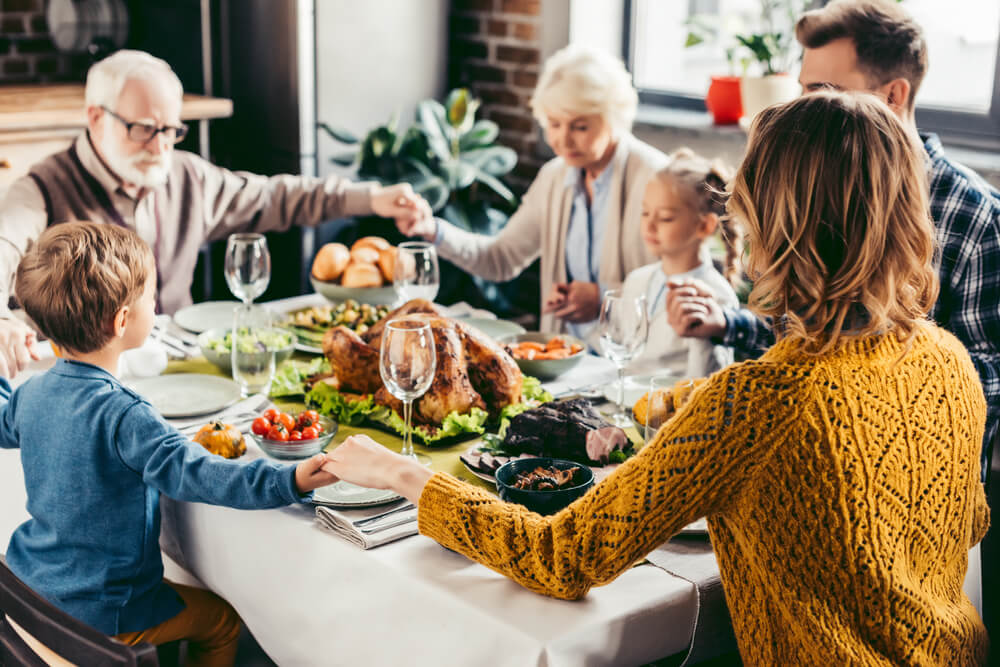
Мы часто видим в кино и сериалах сюжеты, связанные с празднованием Дня
благодарения. На экране американские семьи собираются вместе и обязательно едят индейку. Но что это за праздник? Почему он так важен для жителей США? И можно ли нам попробовать перенять эту семейную традицию? Давайте разбираться!
Содержание:
- Что такое День благодарения?
- День благодарения: история праздника
- Кто и когда празднует День благодарения?
- Отмечают ли День благодарения в России?
- Как отмечают День благодарения в США?
- Какие традиции есть на День благодарения?
- Как провести День благодарения с детьми?
- Меню для праздничного ужина в День благодарения
- Что посмотреть в День благодарения?
Что такое День благодарения?
Сегодня День благодарения стал для жителей Канады и США важным семейным днём. Сам праздник уже давно носит социальный и общественный характер. Однако изначально это было скорее религиозное торжество, призванное воздать хвалу Господу за всё хорошее, что он послал людям. Именно День благодарения открывает самый волшебный праздничный сезон года, который включает в себя Рождество и Новый год.
День благодарения: история праздника
Дж. Л. Феррис. «Первый День благодарения. 1621 год». Ок. 1912—1915. Холст, масло. Частное собрание. Источник: wikipedia.org
Согласно историческим хроникам, в 1620 году первые переселенцы из Англии высадились на американской земле (территория штата Массачусетс). Отважившиеся на путешествие в неизвестность пилигримы стали обживать территорию, сегодня известную как Плимутская колония.
Однако процесс шёл крайне неудачно — больше половины прибывших погибли в первую же зиму из-за морозов, вспышек различных заболеваний и недостатка продовольствия. Выжившие обратились за помощью к местным индейским племенам. Аборигены показали англичанам тонкости земледелия в условиях неблагоприятного климата и малоплодородной почвы. Первый же урожай, который смогли получить пилигримы после наставлений индейцев, оказался невероятно богатым.
Поэтому осенью, когда урожай был собран, губернатор колонии устроил большой праздник, чтобы отблагодарить Бога за ниспосланное благополучие. На торжественную трапезу были приглашены и представители индейских племен. На стол пирующим были поданы пироги и запечённая индейка — эти блюда американцы и канадцы обязательно готовят в День благодарения и сегодня.
А вот в Канаде история одноимённого праздника несколько другая. В ней фигурирует мореплаватель Мартин Фробишер. Ему чудом удалось не погибнуть во льдах у Северной Америки. Впрочем, долгое время канадцы отмечали праздник по совершенно разным поводам: например, благодарили Всевышнего за обильный урожай или выздоровление наследного британского принца. Да и делали это когда придётся — конкретная дата торжества была официально закреплена только в 1957 году.
Кто и когда празднует День благодарения?
Tijana Moraca/Shutterstock.com
Главным образом торжество касается жителей Северной Америки, ведь именно на этот материк прибыли английские пилигримы. Наибольшей популярностью праздник пользуется в США и Канаде — здесь он имеет статус государственного.
Однако с датами есть небольшая путаница. Так, на сегодняшний день в Канаде День благодарения отмечают во второй понедельник октября, а в США — в четвёртый четверг ноября. То есть в 2022 году канадцы праздник уже провели 10 октября, а американцы всё ещё ждут 24 ноября.
Смещение дат имеет историческое обоснование. Дело в том, что изначально День благодарения не был официальным. Законодательно закреплён он был только в 1789 году. Едва основанное американское государство нуждалось в собственных национальных праздниках. Поэтому первый президент США, Джордж Вашингтон, постановил отмечать День благодарения ежегодно 26 ноября.
Позже, в 1864 году Авраам Линкольн внёс изменения в праздничный календарь — теперь Днём благодарения был объявлен каждый последний ноябрьский четверг. А в 1939 году Франклин Рузвельт перенёс праздник на предпоследний четверг месяца. Вот только юридической силы его рекомендация не имела, и в стране начался своего рода раскол. Страна поделилась на три лагеря: одни считали праздничным последний четверг ноября, другие — предпоследний, а третьи приняли решение праздновать в обе даты.
В результате в 1941 году американскому Конгрессу пришлось принимать билль за подписью президента, согласно которому для всего государства устанавливался один общий день для торжеств. Решено было остановиться на четвёртом четверге ноября.
Отмечают ли День благодарения в России?
В трудовом календаре РФ такого праздника нет и официального статуса в нашей стране он не имеет. Однако любой желающий вправе устроить себе такое торжество самостоятельно, например, чтобы разнообразить досуг или приобщиться к культуре другой страны.
Наиболее близким по смыслу в числе российских праздников можно назвать Международный день «спасибо»» — он отмечается 11 января каждого года.
Как отмечают День благодарения в США?
Deborah Kolb/Shutterstock.com
Как правило, большинство компаний и организаций — особенно государственных — объявляют день нерабочим. При этом многие американцы предпочитают взять отгул ещё и на пятницу — тогда праздничных дней станет сразу четыре. За это время можно навестить далеко живущих членов семьи или устроить целую череду посвящённых торжеству мероприятий.
В американском обществе принято проводить День благодарения в кругу семьи. При этом принимающей стороной будут старшие родственники — именно в их дом на праздничный ужин приедут все, кто помладше.
Какие традиции есть на День благодарения?
Поскольку речь идёт о национальном празднике, который фактически отмечается уже не одну сотню лет, в американской культуре появилось немало традиций и обычаев, относящихся к нему. Редакция «Где мои дети» подобрала для вас наиболее яркие и интересные из них.
«Помилование» индейки
Evan El-Amin/Shutterstock.com
Эта церемония ежегодно проводится в Белом доме. На лужайке у здания первые лица страны публично «милуют» птицу, которая должна была стать главным блюдом вечера. Пернатая счастливица не только избегает незавидной участи в этом году — вето накладывается и на лишение её жизни в последующем. Животное благополучно проводит все отпущенные ей дни на родной ферме.
При этом главную героиню церемонии выбирают всей страной. Примерно за месяц до праздника на сайте Белого дома появляется список кандидаток на «помилование». Граждане участвуют в онлайн-голосовании, по результатам которого и принимается решение. Кроме того, американцы выбирают и «вице-индейку», которая заменит победительницу конкурса, если с ней что-то случится.
Костюмированные шествия и парады
Hoover Tung/Shutterstock.com
Каждый год разные компании и организации проводят костюмированные театральные шествия, посвящённые празднику. Наиболее известный из них — парад Macy’s крупной сети супермаркетов. Это мероприятие одно из старейших шествий, приуроченных ко Дню благодарения. Во время парада по улицам Нью-Йорка проходят огромные толпы, выступают музыканты (например, девушки-барабанщицы), в воздухе летают огромные куклы узнаваемых персонажей.
Праздничный обед
Bochkarev Photography/Shutterstock.com
Торжественный ужин с запечённой индейкой — известный и распространённый шаблон, который мы часто видим в кинематографе и социальных сетях. И это ещё одна обязательная американская традиция. В этот день принято приезжать в гости к старшим членам семьи и подавать на стол определённые блюда — о них мы расскажем в следующем разделе.
Интересный факт: многие семьи неукоснительно придерживаются ещё одной традиции, связанной с подготовкой застолья. Довольно часто во время готовки, украшения дома и сервировки стола жители США смотрят матчи по американскому футболу. А сама трапеза обязательно начинается с благодарственной молитвы. Кроме того, во время ужина все собравшиеся за столом по очереди рассказывают о том, за что они были благодарны в прошедшем году.
Гадание на счастливой косточке
В конце торжественной трапезы американцы часто гадают на так называемой wishbone, дословно — «косточке желаний». Речь идёт о вилочке — раздвоенной кости в скелете индейки.
По традиции, двое членов семьи берутся рукой каждый за свой кончик кости и загадывают по желанию. Затем участники гадания пытаются сломать «счастливую косточку»: желание сбудется у того, кто останется с большим куском в руках.
Благотворительность
ESB Professional/Shutterstock.com
Различного рода благие дела — ещё одна очень значимая для американцев традиция. В День благодарения, за несколько дней до и несколько дней после принято жертвовать средства в различные фонды помощи. Альтернативный вариант — благотворительность делом. Можно провести время как волонтёр приюта для животных, шелтерах для бездомных и иных организациях, часто очень нуждающихся в лишней паре рук.
Традиционный декор
sergiophoto/Shutterstock.com
Важный элемент создания правильной праздничной атмосферы — традиционное оформление помещений.
Так, в доме принято расставлять букеты из оранжевых, красных и красно-коричневых хризантем с веточками различных ягод. Вместе с этим обычно помещения декорируют разного рода символами плодородия и богатого осеннего урожая. В этой роли выступают небольшие тыквы, кукурузные початки, орехи, ягоды, овощи и фрукты. Дополнить композицию можно сухими листьями и гроздьями винограда, которые будут свисать с переполненного блюда.
Как провести День благодарения с детьми?
Yuganov Konstantin/Shutterstock.com
Если вы хотите глубже погрузиться в зарубежную культуру, можно провести весь праздничный день так, как его обычно проводят американцы. Вот чем можно заняться вместе с детьми:
- Совместно приготовить торжественный ужин.
- Посетить приют для животных и оказать посильную помощь (например, в выгуле собак).
- Сходить в гости к бабушкам и дедушкам.
- Устроить домашний костюмированный парад. Подготовьте несложные наряды для всех членов семьи, выберите музыку для марша каждого из вас и торжественно прошагайте по коридору до кухни с накрытым столом.
- Посмотреть тематические фильмы или мультики, а потом устроить обсуждение картины.
Меню для праздничного ужина в День благодарения
Наиболее важная часть праздника — семейный ужин, на котором за одним столом собираются все родственники. По традиции, подавать нужно примерно те же блюда, которые английские пилигримы ели во время самой первой праздничной трапезы.
Считается, что в меню основателей-колонистов входила запечённая индейка в клюквенном соусе, тыквенный пирог, ягоды, орехи, кукурузный хлеб и картофельное пюре. Часто к ужину дополнительно готовят блюда из утки или гуся. Из напитков обычно подают яблочный сидр и молодое божоле (сорт красного вина).
Рецепт индейки ко Дню благодарения
rom_olik/Shutterstock.com
Опытные американские хозяйки называют этот рецепт индейки одним из самых простых. Следуя инструкции, почти невозможно приготовить блюдо невкусно.
Что потребуется:
- тушка индейки;
- яблоки;
- морковь;
- лук;
- пряности и специи;
- сливочное масло.
Как готовить:
- Поставьте духовку разогреваться при 160 градусах.
- Тушку освободите от шеи и гузки (хвостика), удалите потроха. Обычно печень откладывают отдельно, а остальное используют для приготовления традиционного мясного соуса или вкладывают обратно при фаршировке.
- Просушите индейку бумажными полотенцами. Снаружи и внутри тщательно натрите солью, перцем и другими специями на ваш вкус.
- Овощи и яблоки очистите, нарежьте и смешайте между собой, а затем нафаршируйте ими птицу. Тушку поместите в глубокую форму грудкой вверх и смажьте растопленным сливочным маслом (саму форму тоже можно предварительно натереть маслом, чтобы избежать пригорания).
- Заготовку накройте фольгой и отправьте в духовку. Время запекания зависит от веса индейки. Пять и менее килограммов — на 2 часа. Для каждого «дополнительного» килограмма добавляйте по 30 минут к основному времени.
- По истечении времени снимите с мяса фольгу, снова смажьте тушку сливочным маслом и отправьте в духовку еще на час при температуре 220 градусов.
- Когда блюдо будет готово, дайте ему немного постоять, а затем подавайте к столу.
Дополнить блюдо необходимо клюквенным соусом: можно приготовить его самостоятельно или купить готовый в любом супермаркете.
Как приготовить клюквенный соус самостоятельно:
Другие рецепты, которые подойдут для праздничного ужина:
Что посмотреть в День благодарения?
Мы выбрали для вас несколько лент, в которых ярко описывается празднование Дня благодарения. Показываемые в них традиции помогут лучше понять иноземную культуру.
Индюки: назад в будущее (2013)
Кадр из м/ф «Индюки: назад в будущее», 2013
- Рейтинг: 6.3
- Продолжительность: 1 час 31 минута
- Возрастные ограничения: 0+
Главный герой картины — индюк по имени Реджи. Он живёт на обычной ферме, но в отличие от своих сородичей понимает, что хозяева откармливают их не просто так. Он полон решимости любым способом изменить главную праздничную традицию.
И вскоре ему выпадает такой шанс — вместе со слегка безумным другом Джейком Реджи отправляется в прошлое. Теперь приятели могут навсегда изменить национальную историю и сделать так, чтобы традиция ужинать индейкой на День благодарения не возникала никогда.
Ценности семейки Адамс (1993)
Кадр из фильма «Ценности семейки Адамс», 1993
- Рейтинг: 7.7
- Продолжительность: 1 час 34 минуты
- Возрастные ограничения: 12+
Сюжет рассказывает о появлении у Гомеса и Мартиши младшего сына. В помощь себе родители нанимают няню по имени Дебби. Однако новенькая гувернантка оказывается падкой на богатство. Она решается на любовную аферу и добивается расположения дяди Фестера, а затем плетёт сеть интриг против родственников своего избранника.
Однако старшая дочь Адамсов — Венсди — раскрывает истинные мотивы няни. Чтобы дети не смогли разрушить её планы, Дебби добивается их отправки в детский лагерь.
Старый добрый День благодарения (2008)
Кадр из фильма «Старый добрый День благодарения», 2008
- Рейтинг: 6.5
- Продолжительность: 1 час 28 минут
- Возрастные ограничения: 12+
После смерти супруга Мэри Бассет оказывается в непростом положении с детьми на руках. Семье настолько недостает средств, что они не могут позволить себе даже индейку на День благодарения. Тилли — старшая дочь Мэри — решает рассказать о бедственном положении своей бабушке Изабелле.
Сама вдова давно прекратила всякое общение с матерью, однако Изабелла, узнав о случившихся трудностях, приезжает на ферму Мэри для помощи. Теперь родственницам предстоит вместе отпустить все обиды и заново выстроить тёплые отношения.
Изучение культуры другой страны всегда помогает лучше понять менталитет её жителей. К тому же это отличный способ разнообразить досуг, провести время с семьей и добавить в повседневную жизнь ещё один праздник. Какой бы формат торжества вы ни выбрали, помните о его главном смысле — заметить хорошее и почувствовать благодарность за те позитивные моменты, которые случаются с вами.
Источник фото обложки: LightField Studios/Shutterstock.com
Получите чек-лист подготовки к школе на свою почту
Письмо отправлено!
Проверьте электронный ящик


